#I cannot for the life of me define what makes something look 2010s
Explore tagged Tumblr posts
Note
What you wrote about the shift in the online definition of feedism is interesting to me! I was exploring the online scene during that time (2011), too, and I feel a bit the same and a bit opposite. I saw “feedism” being used as a catchall term that folks lumped everything involving eating or gaining weight under. Stuffing and bloating were included under “feedism.” Even vore was occasionally under that umbrella.
I think now I see it as similar to the label of “queer” vs more specific labels within the queer identity. Queer itself can be an identity or an umbrella term. Like feedism can be a kink in its own right, or an umbrella term for other kinks. I hope this makes sense.
Sorry for sitting on this ask for ages, I was trying to find a few sources I *know* I have read with different definitions of fat fetish related terms, and I was curious to look back and them and see what they said. One was an older webpage and one a 2010s-ish? webzine, I believe, with like infographics and everything, but for the fucking life of me I cannot find them!
That's interesting, though! I agree, I have definitely heard feedism used as an umbrella term for as long as I've known it, I just don't think it was as common back in the day in my memory. It was (/is?) my impression that people who weren't as invested in the nitty-gritty of various terms used a looser definition, kind of like people now who don't distinguish between "feedism" and "feederism".
But with all of this kind of stuff I can never tell what might have been representative of the communities at large and what might have been a reflection of the specific slice of the Internet I happened to be exposed to, so who knows. The way feedism was always explained to me when I was learning about it was a feeding dynamic 🤷♂️ That's more useful for me personally but I don't make the rules about how other people want to identify, and I've kind of started seeing in the past year or 2 that if I really cared enough to make it a battle it would be a losing one lol, all the youths seem to be using it as an umbrella term to mostly mean weight gain kink at this point. I also may be 100% wrong and just made up the definition in my head without realizing it back in the day and have run with it for years!
I do think that it's worth being very intentional about how terms are defined and used in formal or academically-minded writing about ourselves, though, and making sure we're acknowledging the nuances in how the term is used, and I think my points I made in my reply to the post we're referencing still stand.
I once read a line in a paper or article or something that expressed the opinion that after so much research done on BDSM over the decades on what BDSM, what engaging in fetish dynamics and acts "means", the most solid conclusion that can be drawn is that the BDSM community are the worst people to ask about what BDSM means because nobody fucking knows and there is 0 consensus lol. I imagine it would be similar for our side of the tracks, too, there's a lot of variation and diversity among us.
What I really wish could happen is getting a huge sample of free-text submissions of terminology definitions from people in the fat/feeding/weight gain fetish realms just to see what everyone's similarities and differences were!
(and this is why we need to document and preserve and archive our shit, it sucks that it's so hard to go back and compare how we were defining ourselves in the past!)
21 notes
·
View notes
Note
Would you consider Hugo Strange a pulp villain?
Yes. And I would argue that he didn't really stop being one even after his revival.
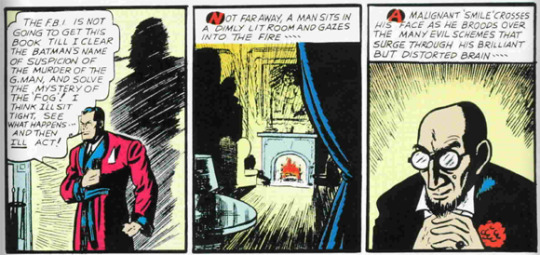
"Professor Hugo Strange, the most dangerous man in the world! Scientist, philosopher and a criminal genius - little is known of him, yet this man is undoubtly the greatest organizer of crime in the world! - Bruce Wayne, Detective Comics #36
Hugo Strange was created with the intention of being Batman's arch-enemy right from the start, introduced as such by Bruce when he figures out he's responsible for the G-man assassination, pretty explicitly intended to be Batman's Moriarty and with even an equivalent demise. He was big enough to tower over his henchmen and fistfight Batman, he had a uniquely deformed skull, he was both a charismatic but threatening crimelord as well as a mad scientist plotting to TAKE OVER THE WORLD, and I've heard before the argument that the Monster Men were taken from a Doc Savage novel released earlier the same year called The World's Fair Goblin that revolves around a giant mutated man doing crimes under command by the story's villain
That poor devil, Maximus, was a Fair visitor himself, once. He was given injections of thyroxine and adrenalin—and changed rapidly into a pituitary giant. But, in the experiment, his will power was destroyed. Now he only follows the directions of that masked devil who has him hypnotized
He said, "The Man of Tomorrow stuff was merely publicity to draw the Fair crowds—and a shield to cover your own experiments. But the masked surgeon cashed in on it. Obviously he is mad enough to really believe a superman can be created." - The World's Fair Goblin
(Considering Lester Dent had taken potshots at Superman explicitly in "Whisker of Hercules", it's not unlikely that this is an explicit reference)
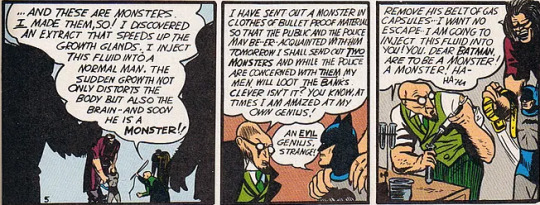
Although there's really no overlap in the stories besides that, as The World's Fair Goblin only had one giant where as Hugo mutated a couple dozen mentally ill patients to create monsters and then used them to go on mass murdering rampages, because Batman has always been over-the-top. But, yeah, original form Hugo was a pretty cut and dry pulp villain, like most of Batman's villains who debuted prior to 1940. Which is part of why he only had about 3 appearences before they killed him off.
By this point, Batman was in the process of moving away from his pulp knock-off origins into more of his own character, with the introduction of Robin and Dick Tracy cartoon villains that would set the tone for the rest of Batman in the Golden Age, and with the debut of Joker and Catwoman in Batman #1, Hugo was already obsolete as an arch-enemy, and was killed off the following appearence.
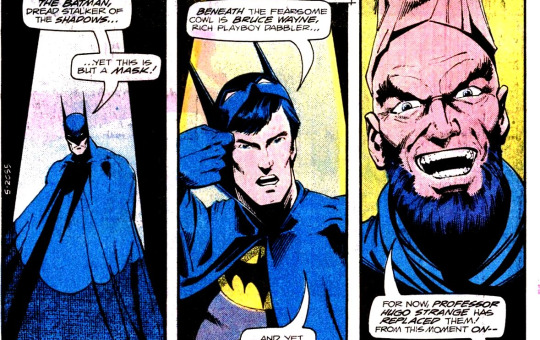
Of course, if you know Hugo Strange, you likely already know this, and that he was then revived in the 70s by Marshall Rogers with a brilliant take that stuck to the character's origins as a brilliant crimelord and scientific genius, but also added to him a specifically twisted psychological bent of being obsessed with Batman and becoming Batman, a villain of unshakeable will and even a twisted sense of honor and ethics, refusing to divulge Batman's secret identity even while beaten to death.
And from that moment onwards Hugo would go on to have some of the most consistently brilliant appearences out of any Batman villain (at least until the 2010s) and would secure himself as a mainstay, albeit a very obscure one, figure of Batman, the kind of villain whose plots can range from Born Again-esque subtle destructions of a person's life to a rampage of mutant kaijus on downtown Gotham, and like many of the best Batman villains, it all comes back to a central obsession and psychological edge upon Batman, and the weaponizing and destruction of anything that stands in his way.
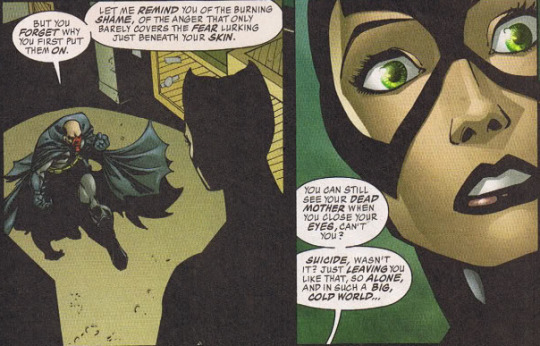
You could argue Hugo Strange used to be a cut and dry pulp villain who was eventually reimagined as a Batman Villain, and it would even be somewhat fitting of his in-universe trajectory as a man who started out a career as a figure of prestige and respect, effortlessly able to blend in society, until his repeated encounters with Batman and, most importantly, his gradually increasing obsession with becoming Batman, gradually destroyed him until he's no longer the one ruling the madhouse, but instead trapped in it.
But the reason why I'd argue Hugo Strange is still a Pulp Villain is because his reinventions didn't shed away what he used to be, they merely returned him to his true origins. Because Hugo, you see, is not just a Mad Scientist or Mad Psychologist, Batman's got those by the dozens. Hugo is of a particularly nasty kind of Pulp Villain, who came to existence around the same time as the Mad Scientist if not slightly earlier, an archetype Jess Nevins has named The Evil Surgeon
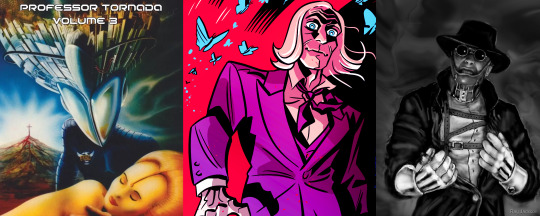
Medicine has arguably thrown up more serial killers than all the other professions put together, with nursing a close second - Herbert Kinnel, former chairman of the British Medical Association
The Evil Surgeon came to existence as a pop culture archetype in the late 19th century, as the result of serial killers like Jack the Ripper and H.H Holmes making the news, with Doctor Quartz from Nick Carter being first and foremost among these, as the main arch-enemy of the most published character worldwide at the time.
He would be followed years later by H.G Wells's Doctor Moreau, and the likes of Dr Caresco and Professor Tornada, the stars of novels created by André Couvreur, who was himself a medical doctor and used these novels to both condemn the characters as well as give serious consideration to the ideas they explored, and depicted Dr Caresco's over-the-top exploits harkening back to stories about Marquis de Sade (the origin of the term "sadist"). These would be followed by characters like Grigorii Trirodov, Dr Cornelius Kramm, Dr Gogol from Mad Love, currently the most famous example of this seems to be Hannibal Lecter. And Hugo has been operating much more along the lines of those characters in the last decades, than the typical mad scientists he was once designed in reference to.

Of course there's a massive overlap between the two and room to dispute whether they even constitute separate archetypes, they practically came to existence together following the footsteps of Victor Frankenstein, who really isn't a true example of a Mad Scientist in the original novel, and wasn't even a real doctor, but Frankenstein's reputation undeniably is the oldest cultural touchstone we can point to as an influence in the archetype, even if said archetype would only truly take form in pulp magazines and serials.
What I'd argue defines the Evil Surgeon as an archetype specifically, is that they are specifically centered around the violation and destruction of the human body and function more as murderers with budgets, than supervillains in labcoats. Mad Scientists are generally more centered around plots closer to sci-fi/fantasy inventions like sentient robots and immortality potions used for large scale global domination, where as Evil Surgeons are more preoccupied with wielding psychology and torture and criminal resources to get away with destroying minds on more individual scales, or turning cities into slaughterhouses for them to work in.
They aren't quite full blown slasher villains, like Zsasz or Professor Pyg, instead they usually tend to be quite good at passing off as respectable, mentally sound figures of moral standing, and usually possess a sense of purpose towards their work, a goal they are working for by piling corpses atop each other and moving resources to achieve, even if said goal is a purely selfish fulfillment of their own desires. It's quite common for these characters to acquire large bases for them to operate in, even islands specifically.
In Caresco Surhomme, Caresco has taken control of the Pacific island of Eucrasia. Caresco applies his surgical methods to the inhabitants of the island, altering them to better do their jobs. The captain of the plane which brings outsiders to Eucrasia is a limbless trunk with telescopic vision. Even the island itself is in the shape of a human body. The natives of Eucrasia are addicted to various sensual pleasures and generally submit to Caresco’s rule, for fear that he will castrate them or worse.
On Eucrasia, Caresco makes use of “omnium,” a mysterious and unexplained power source, to create: a machine capable of stripping the years from human bodies and reversing the aging process, a fast underground train system, food pills, omnium-powered diving suits, and so on. Caresco is given to such things as collecting the spleens of all those he operates on - Jess Nevins, The Encyclopedia of Pulp Heroes
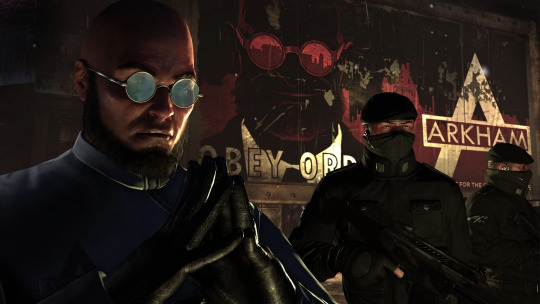
So, yes, I absolutely would argue Hugo Strange is still a Pulp Villain. Pulp villains do come in many different forms other than the Fu Manchus and Fantomases that are most commonly imitated, pulp was the breeding ground of the supervillain as a concept after all, where they got to star in their own magazines time and time again. Hugo started off as a fairly generic one, and when he's written poorly, he tends to be brought onboard of a story purely because it calls for a mad scientist.
But Strange came back from death as something much, much worse than just a crimelord and mad scientist, a much more rare and much nastier type of villain that, much like Hugo himself, may lie dormant, but refuses to stay dead for long.
"Quincy. My servant. My friend," Hugo said. "We don't have much time."
Quincy was crying again, with joy. "How, master, how did you-?"
The therapy, Quincy realized. The hypnosis. The drugs.
"Stay with me master, please!" Quincy tried to grab hold a phantom hand.
"I cannot." Strange said, looking benevolently down at Quincy, stroking his hair with a touch the prisoner couldn't feel. "But there is one last service you can perform me."
"Anything, Hugo, please."
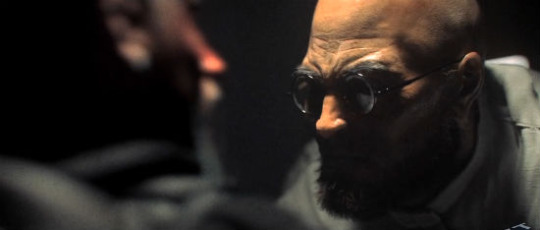
"First, remove the sheet from your bed, Quincy. And tie it to the light-fixture on the ceiling."
39 notes
·
View notes
Text
Kuromyu 2021 - First Review
So, yesterday 05-03-2021 was the First Day Performance of Kuromyu 2021, “The Secret of the Boarding School”. It is no secret that I am no fan of the Boarding School Arc, but even so I was very, very curious to see this arc being translated to a stage media.
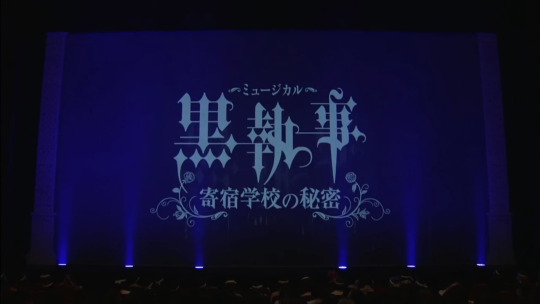
This review shall not be without spoilers. Not just the story itself, because I think by now most people know how the story unfolds. I mean the execution of the stage play itself.
I shall not lie and admit that my review WILL contain my opinions, meaning it is by no means objective and might influence your opinions. For people who wish to experience the production entirely objectively for themselves, I recommend NOT clicking “keep reading” to reveal the spoiler section.
For now, I shall give my spoiler-free rating per category.
Faithful to canon: ⭐⭐⭐⭐★
Script: ⭐⭐ ★★★
Acting: ⭐ ★★★★
Singing: ⭐ ⭐★★★
Music: ⭐⭐⭐★★
Dancing: ⭐⭐ ★★★
Stage & Costume: ⭐⭐⭐⭐⭐
Hereunder I shall give the spoiler-section first preceded by “First Impression”, and then followed by the categories listed here above.
First Impression
The stream started, and seeing the Kuromyu logo in present day again after three years really was very exciting. Since 2010 on as always, Kuromyu opened with the contract scene, and I was positively surprised to see the stage set being quite elaborate! This set was the largest and most elaborate one so far without TOHO’s help.
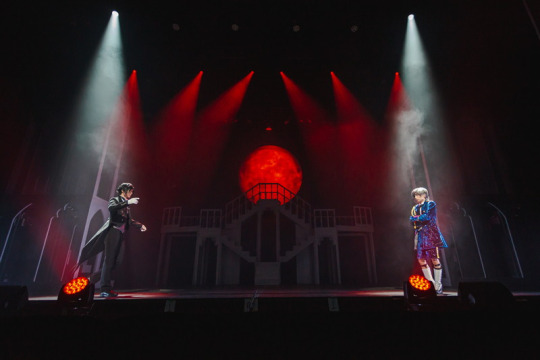
After the contract scene the prologue gave a very quick recap of the Jack the Ripper, Circus, and the Campania Arc. I am not sure whether it was necessary to show the Jack the Ripper and Circus Arc as they provide no information needed to understand Weston Arc. But I think it was mainly inserted to speak to the nostalgia in Kuromyu fans, and as a Kuromyu fan myself, I have to say it did work. It did not take much time, I think maybe 1 minute per arc, so it was fine.
The recap of the Campania Arc was important as it served to equip the audience with the information that there’s a reaper who creates zombies. Undertaker was shown as the main antagonist of the Campania Arc and responsible for the bizarre dolls.
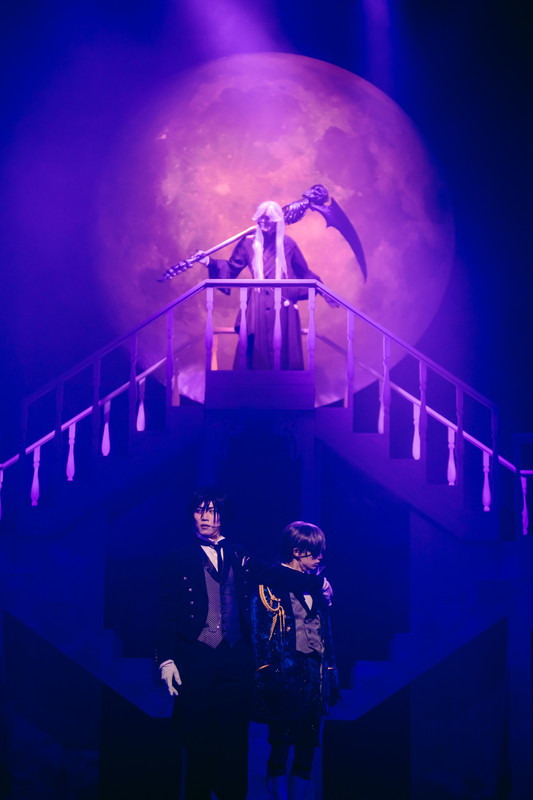
There was a short brawl between Undertaker and Sebastian, which is in fact a very good choice in my opinion to showcase the dynamic between these two supernatural powers...............except that only 10 minutes in, and the musical already MASSIVELY screwed up by portraying the fight as though Sebastian beat Undertaker. The ONLY reason Sebas is still alive is because Undertaker decided so. Normally I wouldn’t care that much about errors in a recap, but this time it serves as the exposition of Undertaker and Sebastian’s dynamic: It should have shown that Undertaker is an incredibly dangerous foe and that Sebas is scared shitless because of that. Especially because this ties in with how this arc was concluded.
“But okay, fine. Maybe the script has other plans, so I shall let it be,” I thought. Moving on. But it did “plant a seed” in me that this musical is either going to contradict itself, or that it is going to defy canon. That was the first impression.
The prologue transitions into the setup of the case quite smoothly, and I have to say it was skillful. You very quickly see Ciel change into the Weston uniform and the admission ceremony was swiftly started. Immediately you get introduced to Agares, the prefects and their fags, and the musical does a good job defining the atmosphere as: “something is off here”.

Faithful to canon: ⭐⭐⭐⭐ ★
The overall musical was really quite faithful to canon. Most plot points were as they were in the manga, and enough so that I would recommend anybody who doesn’t understand Japanese to first re-read the arc as homework. If you have the arc fresh in your memory, it is very easy to trace every action back to the canon.
There are some details that were omitted or changed, probably done so in consideration for the stage medium or run-time, and done reasonably so. Unlike the previous Kuromyus, 2021 adds very little new elements that were not there in the manga. No added extra depth, but also no unnecessary additions.
There were a few things that were very off-canon, namely the characters. But I think that falls under the “acting” header, rather than this header.
Script: ⭐⭐ ★ ★ ★
The script was a real disappointment. You might wonder how faithfulness to canon can be 4/5, and yet the script only a 2/5 in my opinion. WELL, most dialogue was based on the text in the manga, but told as dry as possible. It was also as though the script writers didn’t trust its audience intelligent enough to understand things on their own, or even remember something that was said literally 5 minutes ago.
Exposition Ad Nauseam
There was a tremendous amount of exposition, exposition, exposition, ad nauseam. There was exposition about who Ciel is and what the Queen’s Watchdog is and what his job entails, and that is entirely fine. That’s necessary background information for spectators unfamiliar with Black Butler. However, there was also a lot of exposition that could easily have been left out, or concluded through context. For example, there were quite many expositions about the history and status of the Weston College. In my opinion, a competent script writer could have let the audience known that the Weston College is really important just by giving the information that the blood relative of the QUEEN attends the school, and by showing the Red House, since their entrance is based on social status.
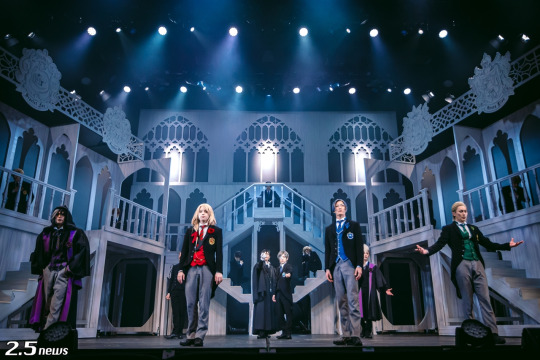
In this post I wrote about my following concern:
Unlike tennis, cricket is a very foreign sport to most people. Cricket cannot be shown without explaining the rules. So if Kuromyu were to happen, these expositions that were dry in the manga to begin with, are going to be even dryer on stage. Does an actor narrate the rules? Do we want Sebastian to sing us the rules??? Or do we want the kids to sing us the rules themselves while they are batting the balls?
And alas, true to my fear, Sebas indeed narrates the rules to us... But even worse, he also explains cricket by using baseball analogy... This is an incredibly ineffective and time-wasting method, because:
it takes the audience out of the moment,
it assumes the audience knows enough about baseball to let it help understand cricket,
and it assumes the audience actually cares about the name of every single strike....
Repetition Ad Nauseam
Then there is the problem where many info-dumps sounded like: “LIKE I JUST SAIDDDDD, DON’T FORGET!!!”. The script for Sebas is the biggest offender. There were many moments Sebas was just saying the same thing twice. At times he repeated the same information, and there were some moments where he regurgitated already given information. (Sorry I’m just being nasty here, but that’s what it felt like (;;≽▽≼;;) )
Sebastian has this obsession with constantly proclaiming himself an omnipotent, one hell of a butler, which makes him capable of doing anything... and after a while it just gets a bit tedious. I have the feeling the scriptwriter really has the hots for him, and therefore can’t shut up about how powerful he is.
While Sebas is the biggest offender, he is by far not the only one. This musical is guilty of doing a lot of very unnatural lines that no person would ever say. Soma for example, seems incapable of saying anything without shouting that he is the Prince of India and Ciel’s BFF. First time, FINE. But the entire time? My god....
Characterisation
Then there is the characterisation of characters in the script. Of course in great part the characterisation is dependent on the actors too, but no matter how amazing an actor is, you do as the script demands.
As discussed above, Sebas is done dirtiest by the script. This script also makes him incredibly arrogant and a bit too happy to be in his master’s service. Similarly, Ciel is also written entirely dependent on Sebastian, and equally happy that Sebas is happy to serve. In the first song between Ciel and Sebastian, without any prompt Sebastian asks his master for his orders, as though that’s what Sebas is looking forward to all day. And the first thing Ciel says in response is: “can you take on this reaper [Undertaker] and the large number of moving corpses?” to which Sebas responds: “Leave everything to me, because I am the Phantomhive butler.” ........and then he proceeds to defeat Undertaker effortlessly.........!?!?!?!?!?! When fighting Undertaker, Sebas also says: “what a bother” as though it’s just a bit of an unpleasant chore rather than a life-threatening fight. And just before Undertaker disappeared all the way at the finale of the arc, Sebas seriously says: “I really don’t get along with you”. SERIOUSLY, WHO WROTE THIS?!
Myu!Ciel is CLEARLY the master of this Sebastian as he seems to be on a permanent power trip. He “it’s an order”s Sebastian for the most trivial of things. At the beginning when Sebas was fighting intruders already, Ciel “it’s an order”s Sebas to take down the intruders.... HE’S ALREADY AT IT!!!
In chapter 70 where Sebas and Ciel simultaneously think of Soma, Ciel doesn’t give Sebas an official order. This shows the audience that there is a certain level of trust between master and servant that they’re on the same page AND that Sebas has come to a stage where he will actually do what’s necessary.
In the musical however, Ciel gives a full “Sebastian, it’s an order, get the procedures done to get him here, to the Weston College.”

This is also an example of how unnatural and repetitive the script is. Who would EVER say “get the procedures done to get him here, to the Weston College”???? Of course procedures need to happen first! And “here” alone would have sufficed, scriptwriters. We KNOW where “here” is! We didn’t forget since 5 seconds ago!
Lyrics
The lyrics are technically not the script, but they are ridden with the same problem as the script itself, so I shall take the liberty of discussing these under the same paragraph.
There is a LOT of repetition in the lyrics as well. The P4 especially sing “Weston” and “tradition” like the ENTIRE time. One song literally goes: “this is Weston, Weston, Weston, Weston, at Weston we uphold our traditions, traditions, traditions, traditions.” The other song is: “It’s cricket, it’s cricket, it’s cricket,” and another “I am Ciel’s BFF, BFF, BFF, Ciel, lord Ciel, lord Ciel, lord Ciel’s BFF.”...... *shudders* ((゚゚((Д))゚゚)) AAAAHHHH!!!!
Acting: ⭐ ★ ★ ★ ★
The acting was by far the most abominable in the musical safe for two gems: Chesslock and Derek. There are too many characters to discuss, so I shall keep it to the main/noteworthy ones.
The gems
Chesslock has this tremendous energy and something very wild about him, and his jumps are so incredibly precise it’s amazing! Derek has but a very small role, but the moment he showed up as the zombie you already immediately saw there was something “off” about him. It was very subtle, but still clearly unhinged. When he was acting living-Derek, you also clearly saw what type of prick he was. Amazing! These two were the brightest stars of the show.
The....... not gems
The most unwatchable ones were Soma and Harcourt. Soma doesn’t have a big role, but he bothered me so much he is ironically the most memorable one. It’s like Okada saw “loud and obnoxious (in a good way)” in the manga, turned it up to 12, and gave the worst portrayal possible. As said above, the script making him repeat “Indian prince” and “BFF” the entire time doesn’t help, but blaming just the script would be letting Okada off too easily.
Harcourt...... gave me so much secondhand embarrassment I literally got a cramp looking at him. When the diarrhea happened he was screaming like a pig about to be raped and slaughtered... and I am NOT making a rape-joke here. I would never. He really did sound like he was unwillingly aroused and terrified at the same time.
Sebastian
Let’s start with the good things: Tateishi’s Sebas did have his presence and his movements were fairly neat. He was never just standing there. He is quite elegant, and not swaggering or pulling spasms on stage unlike a CERTAIN someoneeeeee. He could work a BIT on the coordination of his extremities, but that’s only when I’m nitpicking.
But otherwise.... he was a bit underwhelming to be honest. The main problem is not necessarily Tateishi’s acting-skill maybe, but his interpretation I think... but I can’t say his acting was amazing even at knife-point. The way he acts Sebas makes him look like a complete fanboy of Ciel... which is just not Sebas. He is incredibly eager and at times I could almost see a puppy tail wagging. Whenever he is getting an order from his master he is just beaming. And with Undertaker there was not a single hint that Sebas is scared of the only foe who managed to mortally wound him.
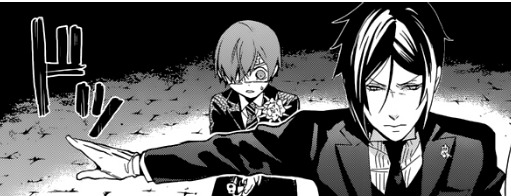
His interaction with Ciel was also very SebaCiel heavy. In the manga where Ciel challenges Sebas why he didn’t go after Undertaker, Sebas is clearly emphasising the importance of the contract, and half-threatening his master not to dare “it’s an order” him to go after Undertaker.

In the musical however, Sebas is all UWU, as though saying: “I couldn’t let the big baddy hurt you... uwu”. Without exaggerating, Sebas caresses Ciel’s face THREE times and then embraces him.
Ciel
Ciel was very unbearable to watch in my opinion. Not as bad as Soma and Harcourt, but otherwise an “honourable” third place after them. In the manga it was a bit cringey to begin with because he is supposed to fake being (*ÓωÒ*), but seeing a 20 year old man do that... and play it up to 11 was just jarring. Ciel is like “tehe” very often, but never actively skipping like a forest fairy.
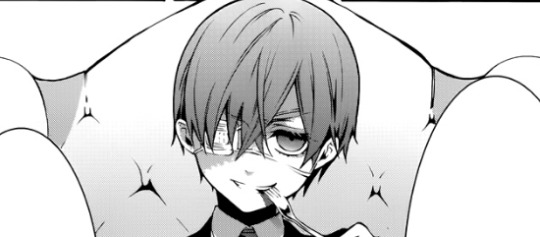
This Ciel also has tremendous mood-swings! He is either UWU or actively a ice-cold diva... and at times he is also being UWU when he’s not around others???? There was also not a single moment where I could see him cooking up a plan. No hint of intelligence or cunningness to be found.
Unlike with Tateishi I can’t really come up with anything good to say about him.
Undertaker
Undertaker was the best among the main three (not that the bar is very high). He is making efforts to tease-threaten Sebas, which I think is a very nice added detail (it’s just that Sebas reacts to none of them... sad.) and even though his role is pathetically small (he doesn’t show up as the principal), he still managed to present himself in the spotlights.
P4
Greenhill had his energy, he was funny, and something really funnily militaristic about him. Though, I was missing nuance in his acting because at not a single point could you see Greenhill might have a trauma for killing people.
Redmond was Viscount of Druitt light and he had a very strong emphasis on the BL aspect with Maurice......which was just personally not my cup of tea. But I have to admit that aspect was played up too in the manga. So I guess he was faithful to canon.
Violet was quite charming and eccentric. He did play up the gothicness of the Violet house, which was actually kinda nice! He also had a deep friendship with Chesslock, which I really liked. When Violet didn’t do shit during the tournament Chesslock was really miffed about that, and challenged him. And then Violet showed Chesslock a portrait he drew of him, saying: “you just looked so cool I had to capture that.” That was amazing! He is a bit bitchier and sassier than in the manga, but I really don’t mind.
Bluer.... William light. He was the least memorable of all of them.
Singing: ⭐ ⭐ ★ ★ ★
Nobody really hurt my ears, but also nobody quite hit the notes... and the notes weren’t that hard.
Music: ⭐⭐⭐ ★ ★
Eehhhhhhhhhhhh I’d say the songwriter played most songs a BIT too much on the safe side. Not a single song was memorable, but they didn’t offend me either. The main theme was fairly nice actually, but only when just the instrumentals played. I think it might have been the singing just being too chaotic for me to actually hear the music.
Dancing: ⭐⭐ ★ ★ ★
Chesslock is an tremendously good dancer, his movements were precise and energetic. But otherwise.... nobody really popped out, but there was nobody who looked like a noodle on stage either.
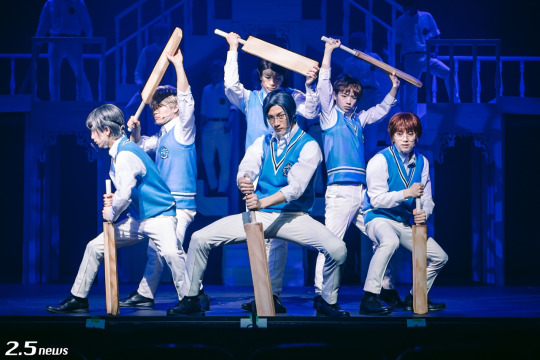
The main problem is choreography; with some exceptions they were very underwhelming and messy. There were a lot of group dances, but often enough people were just a bit out of sync and messy.
Stage & Costume: ⭐⭐⭐⭐⭐
Stage Set
The stage set was VERY good. It was well made and mobile; they could be moved around and functioned as different props. Examples include the cellar in which Derek and his gang were committing crimes, and the boat of the parade even. The set also had this really magical aesthetic about it which communicated the glamour of the Weston College well.

Costumes
The costumes were well made. The logo on the uniforms for example were actually embroidered rather than those iron-on plastic things. The wigs were .... very messy after jumping around a bit and they looked very greasy. But that’s fine. They did their job and I realise I’m just spoiled. TOHO makes their wigs using real human hair, and that’d be an astronomical sum for any normal 2.5D company.

My ONLY problem is Ciel’s “lord costume”. This photoshoot photo underneath is doable, but trust me, on stage it is a nightmare. There are no clear photos of this costume on stage, and I think I understand why.
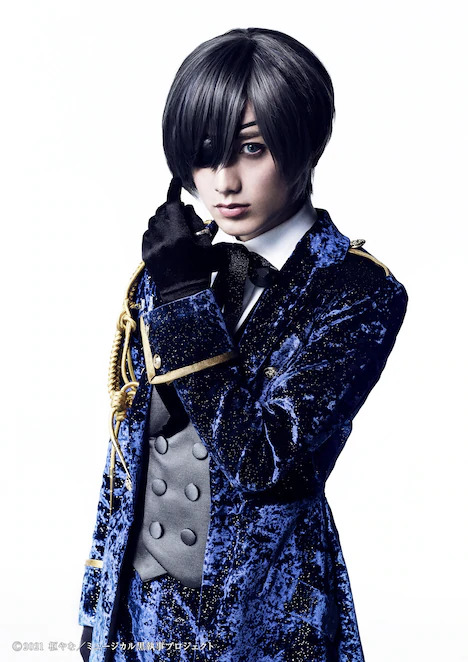
It was glittery velvet which just SCREAMS cheap Halloween costume, it was ill-fitted, almost like it was 2 sizes too large. The costume makers didn’t take stage-lighting into account, so the fabric and details glistened all over the place. Under the limelight the “golden” aiguillettes were PISS yellow. And the suddenly black sock suspenders protruding from his white boots were just...... distracting.
BUT, this was just one costume and he only wears it in the prologue and the finale of the show. Even though it’s God-awful, the rest were well made enough to compensate for this abomination.
Conclusion
So now finally the conclusion! The musical was..... fairly faithful to canon, but the execution leaves quite a lot to be desired. The interpretation/acting of the characters were the most disappointing one, while the stage/costumes were the most charming.
Do I recommend buying the stream/DVD/BD?
Stream: Yes.
I personally do recommend buying the stream as it’s only 3800 yen, especially if you like the Weston Arc itself, and/or are curious to see how they did it. Even though I myself really hate the Weston Arc in and of itself, I was very curious to see how it’d be translated to a stage medium. Despite my mostly negative opinion of the musical, I don’t regret buying the stream at all!
The best reason in my opinion to buy the stream though; it’s a very good and legal way to get a “preview” to see if you want to spend approximately 10000 yen on the proshot.
DVD/BD: Depends on you.
I myself have decided not to buy the DVD because I don’t think I’ll be rewatching it after the stream-archive period is over. The DVD/BD are the most expensive so far, and to me the final product is just not worth that amount of money.
But if you like the Weston Arc, or the performers, or you think you will be rewatching it and you are a collector, I think it is a very nice addition to your shelve.
131 notes
·
View notes
Text
In Defense of Marilyn Manson
Just kidding.
This is another one of those ‘if you live under a rock, you might not know what is going on’ pieces. But because this story appears to be unfolding daily, I’d think you’ve heard a murmur here or there even if you haven’t really paid too much attention to it because for many, I think this may fall into the “that guy has been a messed-up weirdo for years so I’m not surprised” category.
Please note that in NO WAY I am making fun of this situation, but I learned a long time ago that I require a certain amount of humor to be able to digest much of what this world presents to me.
As always, let me give you the Coles Notes version with the hopes you will go and do your own reading as well.
On February 1 actress Evan Rachel Wood posted this on her Instagram:
"The name of my abuser is Brian Warner, also known to the world as Marilyn Manson. He started grooming me when I was a teenager and horrifically abused me for years. I was brainwashed and manipulated into submission. I am done living in fear of retaliation, slander or blackmail. I am here to expose this dangerous man and call out the many industries that have enabled him, before he ruins any more lives. I stand with the many victims who will no longer be silent."
Quick history lesson – They started dating in 2007 when she was 18 and he was 34 and were engaged for a brief time in 2010.
This was Manson’s response to what she wrote:
"Obviously, my art and my life have long been magnets for controversy, but these recent claims about me are horrible distortions of reality. My intimate relationships have always been entirely consensual with like-minded partners. Regardless of how - and why - others are now choosing to misrepresent the past, that is the truth."

Since the original statement on February 1 a number of women have come forward with stories of their own ranging from physical and emotional abuse to human trafficking. And everyday something new is revealed. Evan Rachel Woods is feverishly posting on her Insta-Story and is slowly burying Manson in an ocean of consequences. She isn’t “fired up” or “a woman scorned”, she is a victim rising above the shame she has felt and the fear of what others will say about her to tell her story and encourage others to do the same. She is the voice that started the ball rolling. The ball that is about to crush Marilyn Manson.
Whenever I write stuff that is currently being heavily featured in the media, I always dive into articles so I can get as much information as possible. But more importantly, I plunge my sensitive little soul into the murky depths known as “the comments section”. I do this because unlike those polished, finished pieces the comments section will give you a better idea of what your fellow human beings think and feel about the topic at hand. And it is never polished or even polite. And often not for the faint at heart. In case you didn’t already know – people can be quite terrible.
The comments section is the modern-day gladiator pit. Only most (not all) of the participants are not ripped, athletic warriors but rather drooling basement dwellers with one hand down their pants (not gender specific by the way) and the other hand maltreating the letters on their keyboard.
Side note: Look, I am not the grammar police as I often just push past all the warnings from the Gestapo editing program in Microsoft Word. BUT I know the value of proper spelling, well placed punctuation and valid attempts to appear smarter than a domesticated turkey by making sure sentences are well-thought out and complete. Raising your argument doesn’t mean USING ALL CAPS AND ABUSING THESE THINGS -> !!!
I just deleted three paragraphs going over the recent “reckoning” that has taken place in the past few years with regards to sexual and physical abuse accusations against (mostly) men in positions of some kind of power. I eliminated all that writing because I started to tumble off topic. I’m not writing about all the dicks now getting their comeuppance, but rather the reactions to it being Marilyn Manson’s turn in the chamber.
Victim shaming is sadly a real thing.
The easiest way I can explain this to you – if a person gets pickpocketed and then blamed because they should’ve known better than to carry their wallet in their back pocket.
Evan Rachel Woods and others have come out to accuse Manson of some pretty appalling acts of abuse and what I’ve found to be the biggest reaction is, “How did they not know he was a bad guy? His music is so graphic and they thought it was all an act? Why did they stay so long?”. As innocent as those questions might seem, and I say that because our brains don’t always serve us or others well, it is a form of discrediting those women. Let’s be honest here… it’s hard to look at Marilyn Manson and his art form and not say, “What the fuck, this guy has bad idea written all over him!”. I feel that is a perfectly reasonable response, but that is where it should end. I think it is fair to pause and attempt to understand the choices of others, but it’s heartless to minimize their experience by placing blame on them for a situation we couldn’t possibly understand if it has never happened to us.
And like I’ve quoted before: People only understand from their level of perception. But that doesn’t stop them from laying on the judgement and damaging already fragile individuals with their inability to show compassion for a fellow human being. Reading through comment sections isn’t just maddening, it’s disappointing and sad but also a real look into how awful many people feel about themselves… to the point where they seem to derive some pleasure or satisfaction from condemning a rape victim for wearing a short skirt and getting drunk.
So… we have to touch on this to be balanced: innocent until proven guilty. Only these days it’s an automatic trial by media with the public acting as judge, jury and executioner. This is where “cancel culture” steps in and within days can destroy an entire career / life. I am not a fan of cancel culture. It does not give people a chance to learn from their mistakes or make amends as it immediately harms their very existence. Often times even before any proof has surfaced. I don’t think I need to tell you how dangerous this is… the fact that just an accusation could ruin your life.
Let me make this clear: if someone comes forward and claims they’ve been sexually assaulted/abused, they need to be taken seriously and not dismissed based upon the circumstances, their gender identity, the color of their skin, their economic position or profession or the person they’re accusing. In turn, the individual being accused should be given time to address the claims before the public begins demolishing their life.
A reoccurring comment in almost all these cases where someone comes forward and alleges abuse YEARS after it happened, is – “Why did they wait so long to come forward?”.
Is this a fair question? Sure. And I feel it is asked because our brain needs to find a way to understand the information we are being given. Because while we’d all like to think that if in the same situation we’d be unfuckable with and anyone who dared to bring damage to our doorstep would immediately suffer the consequences, we actually cannot predict our reaction. There are too many unknown variables to be able to confidently say we’d instantly speak up and seek retribution.
The fear of not being believed. The fear of being blamed. The fear of rejection. The fear of retaliation from the person being accused. The fear of being forever defined by your experience. The fear.
It does not matter the why, what matters is the chance they’ve taken by speaking up at all. Those who come forward should be embraced, not ridiculed. Not abandoned. Not criticized.
“Don’t ask why victims wait so long to speak up. Ask what systems were in place to keep them quiet”. Anonymous
I own a few Marilyn Manson CD’s. And I’ve even attended one of his concerts. Would I say I am a fan? Probably a number of years ago I was but truthfully, I’ve not paid attention to any of his music in recent years because I feel it devolved while my taste evolved. That’s not a slam against him or anyone who fancies his work, it’s more a statement on how I’ve matured and now seek out music that feels authentic to me.
The one concert I attended was opened by Courtney Love. I know, what a duo to pay money to see. Near the end of Manson’s set he made a disparaging remark about Love and trashed her music. At the time he was wearing some pretty hefty platform shoes so it made it all the more hilarious when from out of nowhere she charged like a rhino and tackled him to the stage; throwing punches at his head all the way down. When he finally was able to get up, he announced the show was over. There would be no encore and then him and his bandmates trashed the stage in a temper tantrum worthy of a toddler Napoleon. Still makes me laugh to this day.
Shoutout to Evan Rachel Wood and her most recent movie ‘Kajillionaire’. Watched it on demand about a month ago and it’s a brilliant comedy that will also pull at your heart. I highly recommend you give it a chance.
Check out the trailer:
https://www.youtube.com/watch?v=xiMPCevu8Wk
25 notes
·
View notes
Text
Defense Films Names His Top 5 Favorite Rappers
In All It’s Infinite Glory And Magnanimity, Defense Gives You His Top 5 Favorite Rappers.

5. 50 Cent
To this day, when you need a playlist for a MMA class and the group is hella diverse, you’re not really sure which way to go with it, pop in that 50. Can’t go wrong with Get Rich Or Die Trying (the original), or even that G-Unit Beg For Mercy.
That run from late 2002-2005/06 was unlike anything you’ll ever see again. That was a perfect situation where there was organic support from fans and there were people at a business level, mainly 50, that knew how to turn it into the wave that it became and industry has been trying to replicate this ever since.
While most people remember is the numerous scandals, beefs and controversies of that time but it was the music that moved the audience. For all the ways 50 Cent’s success mirrors ruthless American capitalism, his debut album is low key one of the most inspiring albums you’ll ever listen to.
It’s a foxhole mentality on wax. It’s me-versus-you type thinking. It’s someone has to lose and I’ll be damned. It’s who ever has to get hit, is gonna get hit.
See the first time I listened to it, it was about “In Da Club”, “Wanksta”, you know the more palatable records that got on radio and all that but the more I listened the more I realized, it was actually built on the backs of songs like “Patiently Waiting”, “Many Men”, “Back Down”, “Don’t Push Me” and “Gotta Make It To Heaven”. On one side it’s as motivational as you can think of but it’s not the wacky kind of naivé motivational talk because it’s willing to get it’s hands dirty and go in to much grittier ideas.
Like his predecessors, 50 pulls off the trick of balancing easy-to-listen-to records on a foundation of graphic and aggressive songs.
Recommended Songs: Maybe We Crazy, When It Rains It Pours

4. Jedi Mind Tricks
I’ll give you props if you know who these man are but they are legends. Point blank. Violent By Design will forever rank as one of the great group albums in hip-hop history. Vinny Paz, Jus Allah and producer/DJ Stoupe The Enemy of Mankind, gave hip-hop a shockwave they weren’t ready for, especially back in 1999.
Hip-hop as a business wasn’t ready to market a group, whose themes were rooted in topics like government control, military warfare, covert control tactics, religion and psychological warfare. To have all that in one bundle wasn’t something that big time A&R’s were ready for.
Had they started this group in 2010, they would have walked in to a business landscape that was far more suitable to who they were as an act and as MC’s.
Even with that JMT still enjoyed a lot of notoriety and they definitely succeeded in establishing their following, despite the odds.
While Violent By Design may serve as the magnum opus of their body of work, their run really starts in 1997 with the Psycho-Social, Biological & Electro-Magnetic Manipulation Of Human Kind.
Yes guy, that’s an album title. You gotta think now, I was in high school the first time I heard this and I was very into conspiracy theories and nonsense, so this album hit me right between the eyes. The idea that someone could use the medium of hip-hop in this way was crazy and the album would have been more than 10 years old when I first heard it.
No, the hip-hop historians among us will argue that Wu-Tang were a better and more influential group and I’d tend to agree, I can also bust back and say, “these dudes took Wu-Tang’s formula and gave it a whole different edge.”
I’ll break it to you like this, Wu-Tang gave the world swordsmanship and the first projectile weapons like bow and arrows, spears and the likes. Jedi Mind Tricks gave the world gun powder, advanced modern explosives and semi-automatics. You see what I mean?
Recommended Songs: Untitled, Retaliation Remix

3. Jay-Z
No top rappers list is complete without my man. The only reason he ain’t higher is because, I rate a rapper more highly if they’re in the prime of their musical abilities. If this were an all-time list he’d be way way higher.
Beginning with Reasonable Doubt is really the only place to start when it comes to Jay. The production, the skits, the way every sentence was so tightly wound together, the word selection and sentence construction. It’s remembered as an album of hits because of tracks like “Cant Knock The Hustle”, ”Feelin It” and “Brooklyn’s Finest” but Reasonable Doubt was really defined by “Dead Presidents”, “D’evils”, “Politics As Usual” and “Can I Live”.
The first batch of songs gave the album some relatability, as far as depicting club vibes and nightlife glamour because that second batch of songs were all built on darker themes like betrayal, jealousy, greed, blind ambition and deception. That combination of themes as well as the production to match each one is why that album will always rank high among a certain listenership.
With that being said, never make the mistake of thinking Jay or any man is perfect. There’s like a 3 album run where there’s moments of dope-ness but not a truly complete album.
Still with that, songs like “Imaginary Player” and “Where I’m From” will rank among his best songs.
It’s only when you get to The Blueprint can you start to see Jay perfecting the art of crafting, whole, complete albums that bump from start to finish. The Blueprint was near perfection in this regard. “U Don’t Know”, “Heart Of The City” and “Momma Loves Me” will rank as his best efforts and yeah, I skipped a few.
The Black Album replicated the Blueprint’s listenability, while also dealing in topics that created an album that sounded very personal to Jay.
All told, the best parts of his catalogue are so strong that there is no denying his place on my list.
Recommended Songs: Dead Presidents, I Love The Dough
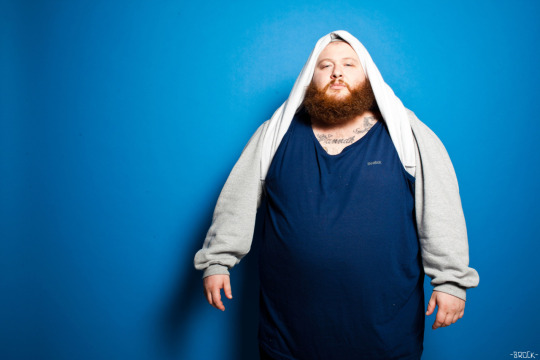
2. Action Bronson
I cannot for the life of me fathom how this man doesn’t get the love but the real ones know.
The mixtape download era (2010-2017 give or take), had many unlikely success stories. An overweight white guy, who grew up cooking in his parents deli/eatery, turned pro-chef then turned rapper, is beyond unlikely. Only the internet could allow this man to succeed and thank the hip-hop gods it did.
From 2012 to about 2018, Action was one of the only constants in my playlist. I still remember where I was the first time I heard “Brunch”. His catalogue starting with the Tommy Mas produced, Dr Lecter and boasting full collaborations albums along side Statik Selektah and the Alchemist, and of course the classic Blue Chips series. This man’s prime will be underrated.
If you’re going to take one chapter of Bronson’s art and study it, it’s going to be Blue Chips 1 and 2. Both are thematically perfect without ever trying to be. Which is what allowed Party Supplies to make production choices that grabbed you from the jump. From the first time you hit play on the opening of Blue Chips 1, you’re hit with the sound of falling shards of glass and a violin sound that makes the opening song un-skippable. The songs themes are also a perfect introduction to the man himself. Debauchery, expensive taste, hedonism, revelry, unabashed pleasure-seeking, drug use and just enough self-depreciation that you felt you were along for the ride rather than just a fly on the wall, turning your nose in disgust. It was a perfect mixtape, at a time when mixtapes were at a crazy dumb high standard.
It’s not so much that a rapper made punchlines about food, that would be an over-simplification and really missing the trick. It’s that he made everything he said sound like the dopest thing ever and the most underrated trick about his music is that he made grown man rap without needing to be thuggin’. A rare feat.
Bronson has since gone on to establish himself as a content creator/producer/food review guy but man, what he accomplished as a complete body of work is nothing short of astonishing.
Recommended Songs: Midget Cough, Bonzai
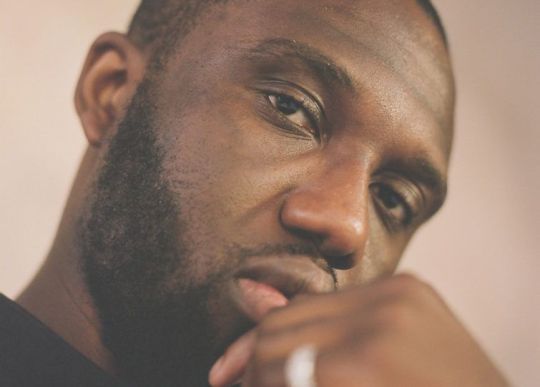
1. Headie One
So it’s late last year. I’m hanging with my boy Phil and Brown, we had just finished some content and Phil says “yo listen to this”. He proceeds to play Golden Boot and it hasn’t stopped bumping since.
A UK rapper with a lyrical nous and wit that rivals even legends like Jay-Z, but rapping over trap and drill beats. What Headie One is doing is not the norm and I’m talking in terms of his lyrics, sentence construction, word selection, metaphors, he does it all and like all the greats, he makes it look easy.
His collaboration with RV definitely helped mold him, with both the “Sticks and Stones” and “Drillers and Trappers” mixtapes giving you an idea of what Headie offers as a lyricist. He compliments RV’s brash, aggressive boasts with slightly less obvious but incredibly witty boasts of his own.
His discography though really starts to peak with 2018′s “The One”. That’s where Headie begins find a sweet spot between his lyrics, production and the themes of his songs. A mixtape like this can only exist via independent release because outside of the aforementioned “Golden Boot”, ain’t none of those songs getting any radio play especially in a country as “conservative” as England. Even in a genre saturated with gangsta/trap, “The One” stands out for what he accomplishes lyrically.
Headie would follow that by releasing “The One Two” in June of 2018 and he ascends even more in what he’s able to accomplish with the words.
The track “Banter On Me” should be in an all-time list somewhere for being the wittiest track of all time. The song is literally just Headie finding new and innovative ways to boast, call out and bait his foes. Hip-hop/Rap has plenty of beef songs that weren’t really direct call outs to any known public figure but were still definitely taking shots at someone. 50 cent’s “Wanksta” and “Officer Down” are some examples of such songs I can think of. Those did not really have the kind of wit Headie displays here. The constant streams of alliterations, double meanings, puns, metaphors, inferences and innuendos is just astonishing. There’s a real mastery of language at play here. The song is a lesson in language, no textbooks.
Headie has since released his debut album along with additional tracks for the delux version of the album. His debut studio release “Edna” does what studio releases are supposed to do. “Parle-Vouz Anglais” and “Aint It Different” will standout and are difinitely the most palatable songs as far as radio play. Those are the 2 songs I’d play for first time listeners.
Recommended Songs: Hard To Believe, Dues, Zodiac
11 notes
·
View notes
Text
Entry 02
2020 was without a doubt the most chaotic and dazing year of my adult life. To “unpack” my take I’ll have to organize this entry as well as possible, as it’s so easy to lose track of, or even establish a point.
Toilet-Paper-Gate
The toilet paper frenzy baffled me. This topic forces me to admit my most cynical understanding of humanity as a social entity. (For the sake of keeping this interesting I’ll be as honest as possible, but I must first say that this is not a reflection of my typical feeling towards us humans.)
It was early covid days and we were all learning about the impending threat of this virus. Slowly I saw more masks at the grocery store, the news reported it coming closer and closer to being a full global outbreak, and then I saw the toilet paper aisle at Kroger. What do I think happened? In a nutshell, people are greedy and will put themselves first when they feel threatened in any way. Hoarding TP was one way for people to create some sense of control in a situation where there really wasn’t any. I saw videos online of people literally fighting each other for the last TP roll at the store. The situation resembled a panic induced TP stock market crash. This was the first reaction to covid and it was bleak.
Covid is a situation that requires people to consider the impact their actions have on others and what happened? Totally selfish behavior. A problem was created for no reason but to bring a small sense of comfort and victory to a few.
I have fought to embrace my role as a member of society and to make compassion my default feeling towards others. Toilet-paper-gate challenged that. The pandemic had barely started and true colors were already being shown.
BLM protests, the news, the protests & privilege
This is a tough one to reflect on; it is so complex because it takes a specific experience to fully understand. An experience I can only observe. What I can do here is be as honest as possible about my personal experience; one I have never actually articulated. Here it goes:
For most of my life, I have been “asleep” in regards to the underlying racial tension that plagues our country. I was raised in a mostly white town/county in Massachusetts. The area I grew up was mostly upper-middle class and laughably peaceful. I road bikes with neighborhood kids, walked to school, and used my small allowance to buy soda at the old town market.
When I was probably around 7 or 8 years old my parents showed my sister and I the 1977 historical miniseries, “Roots.”
“Based on Alex Haley's family history. Kunta Kinte is sold into the slave trade after being abducted from his African village, and is taken to the United States. Kinte and his family observe notable events in American history, such as the Revolutionary and Civil Wars, slave uprisings and emancipation.” -wikipedia summary
I remember feeling utterly shocked by this series. Roots was my introduction to that part of our countries history. The horrifying imagery from the film is still seared into my memory. But as far as I knew, what the film depicted was only history. It was scary and evil, but nothing more than a thing of the past. For a young innocent mind like my own, it was inconceivable for that kind of evil to exist in modern times. In my world of nickelodeon, nintendo, and Harry Potter; racism just didn’t exist.
Up until I moved to Boston for college in 2010, at the age of 18, I really thought that racism was old news. I had never met a “racist” and I had never heard anyone say or do something racist. It was my understanding that everyone saw racism as despicable and it was pretty much abolished. In fact I still grapple with cognitive dissonance from that comfortable belief and coming to terms with the reality of our society.
In college I made friends of all different backgrounds. I studied fine art and saw films, paintings, performances, and every kind of subversive form of expression imaginable. I learned about important topics like “institutionalized racism” and the prison industrial complex. As I matured I noticed the racist undertones in our media. But I had not connected with the topic on an empathetic level. It seemed totally separate from my small world. At an art school you really don’t meet people that are prejudice. At least I didn’t. So to me it was a real, serious issue but it didn’t hit close enough to home to have a deep impact on my life.
Since then I’ve lived a tumultuous and exciting life that basically centered around me. I did my best to be kind and learn all I could about our world and my reality was ultimately defined by me.
The summer of 2020 was an awakening. Covid had flipped everything upside down. I was confined to my tiny downtown Columbus apartment for months.
George Floyd was killed.
When the news broke I found the whole thing sad and disturbing. But I was still asleep. The protests began and the movement was spreading throughout the country. Suddenly the movement erupted literally outside of my window. I heard the sounds and watched as a crowd of people gathered on Broad St, rapidly growing in size and getting increasingly louder. Police in riot gear lined up in front of them, marching towards them in attempt to intimidate. Pretty soon I had half of my body hanging out of the window to get a close look. The crowd chanted and pushed back on the police. They went back and forth, seeming to challenge each other to make a move. The police made the first move. Streams of powerful mace sprayed the crowd in a brown mist. Suddenly I was coughing and choking. I had never experienced mace before, nor any real violence. I think that is the moment a part of me woke up.
I think that, like in the toilet paper frenzy, people are more self centered than they know or would ever admit. For a movement to really work, it has to also have a direct effect on uninvolved individuals. The BLM protests did that. I had inadvertently gotten involved just by poking my head out of my window. That moment induced in me a new empathy. I was exposed to the smallest amount of mace and was choking and my eyes were burning. I literally cannot imagine how it would feel to be maced in the face by a police officer, but I can now understand how truly fucked up it must have been.
I think that it is in our nature to empathize with things we see ourselves in. Things that validate us and our existence. I think that an individual’s reception of art is an example of this experience. We like art that we see ourselves in. Whether it is a painting that shows a certain form of pain, or a song that describes a form of love we’ve experienced.
I think that, as the majority, white people don’t automatically see themselves in other white people. But I can surmise that minorities have that innate empathy towards each other.
From my apartment window I saw that. I imagine that, for black Americans, seeing George Floyd murdered symbolized their own murder.
I try to understand, but I can only do so within the limitations of my own experience and empathy.
I’ll never know what it’s like to be black in America. The closest I’ve gotten to that experience was breathing in a small amount of mace from across the street. Mace that wasn’t even intended for my lungs. That is my privilege. It’s something that is extremely difficult to wrap my head around.
What do I do?
With the pandemic still dominating basically everything, it’s difficult to come up with ideas. I feel more detached from society than ever before. To be honest, I don’t really know what I can do. I think we’re all kind of stuck watching the world through our TV and window. Our political climate is more volatile than ever and it’s got our attention by the balls.
Imagining a post-covid world feels like fiction. For now my plan is to listen to learn. I have a feeling that this class will be enlightening.
1 note
·
View note
Text
Why CM Punk Just May Have Been The Best In The World
Well, hello there! Thanks for checking out post number one of my brand new, weekly pro wrestling blog :)

Now, allow me to start off by explaining what I mean when I say 'best'. I don't necessarily mean CM Punk was the absolute, definitive, best pure wrestler of all time as there have arguably been a few slightly better than him over the years, although it's a close one! What I am defining as 'best', for Punk, is I believe he may very well have been the best all-rounder of all time, by which I mean taking into account every aspect of wrestling. For example, if you were to mark him out of 100 on every area of wrestling - such as; the wrestling itself, being face, being heel, promos, wrestling psychology, selling, the list goes on... - and make a graph out of the marks given on each area, whilst some areas would naturally be higher than others, I believe for the most part the various sections of that graph would be fairly level and consistent, showing quite a flat line rather than a bumpy, 'up and down' one, which would understandably be the case for most of his competitors.
So, that all being said, let's start off with an area I personally would score him 10/10 on, something he has become known for and unarguably helped make him the star he became. Of course, I am talking about talking - his promos!
Promos
There have always been some good talkers in the wrestling world, from The Rock or Stone Cold Steve Austin right back to Dusty Rhodes, however, very few ever reach that 'perfect' level, that level where everything they say just seems to come out like gold. From the words themselves to the way it's delivered. CM Punk is a guy who has this. Whether you're watching his promos map out his career in ROH, or the infamous 'pipebomb' promo which excelled him to the next level in WWE in June 2011, I personally can not think of a single promo of Punk's where it just didn't seem to fit or seemed somewhat 'off'. His promos of the latter half of 2011 where he was 'The Voice of the Voiceless' really seemed to come from the heart and were so full of truth and expressed what a lot of us fans had felt for a long time.
So Punk, yes, you do have everybody's attention now.
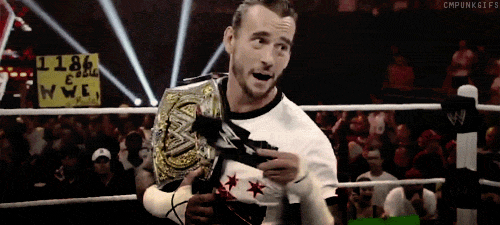
The Wrestling Itself
Next up, of course, is his pure wrestling ability. I would say that whilst there are some who are technically 'better' wrestlers than him, such as Bret 'Hitman' Hart, that list, I personally feel, would be a reasonably short one. Everything he does seems to have meaning, a purpose to it, he wasn't really one to do flashy moves just for the sake of it. When he did do something such as a springboard clothesline or a dive through the ropes, it had a place in the match, it wasn't just there for the sake of it - the match had built to a point where it looked natural and fitted in perfectly.
He had a great mix of being able to have quick, fast-paced spells when the match called for it, whilst being able to then transition into slowing down the pace at relevant points and go into attempting to wear his opponent down with some mat-based submissions and sleeper holds.
He also possessed probably the most difficult quality of a wrestler - being able to get the crowd going again if they quietened down at any point. He knew how to have people invested in the match, how to make them care. If he was a face he knew when and how to lift them up and make them cheer for him. If he was a heel, he knew how to push people's buttons and get under their skin, ensuring they can't help but boo him, which brings me on to the next point..
His ability to be both an incredible heel or a fantastic face
More often than not, a wrestler will be better at one than the other, and in some cases, some can only really do one and not the other.
For Punk, although I feel he had the edge and really came into his own as a heel, we cannot deny how great he was as a face too! Just think back to the previously mentioned 'Voice of the Voiceless' work he was doing in 2011, where he seemed to hold the entire company in his palm and have many fans hanging off of his every word and move, some even tuning in mainly to see him! His feuds with John Cena and Triple H spring to mind with him being the top face in the company at the time.
With regards to him being a heel, well, what more needs to be said?! The Straight Edge Society had people up in arms with him! Or his feud with The Undertaker at Wrestlemania 29 - the build-up to that match alone had a lot of edgey ingredients, some of which even I feel may have gone a little too far, such as the mentioning of Paul Bearer who at the time had not long passed. But when you feel that maybe a heel has gone too far, are they just doing their job? Perhaps it's a debate for another time.
Perhaps my favourite heel promo of Punk's is one that a lot of people might not remember as it seems to have fallen under the radar for whatever reason, being overshadowed by his infamous 'pipebomb' promo. We all remember when he sat down at the top of the stage in Las Vegas three weeks before Money In The Bank 2011 and spoke his mind, but how many of us remember his incredible heel promo building to face The Rock at Royal Rumble 2013?
The video below is what I believe is a heel playing that role to perfection! For the full effect of this great promo, check out the January 27th 2013 edition of Raw on the WWE Network, unfortunately a lot of this promo has been cut down on YouTube.
https://www.youtube.com/watch?v=mr8mfBRsD2s
During the promo, Punk gave a great mix of building the match itself whilst portraying a genuinely unlikable character. He even expressed feelings which may have touched a nerve in real life to some who have come before him, chuckling and claiming that "wrestling one night a month at Madison Square Garden is EASY!!" And that Hulk Hogan "had it easy". This not only seems very disrespectful to those guys, but also seems a big 'no no' in the world of how wrestling politics are behind the scenes. Punk really seemed to say it like he meant it, and in all fairness, look at how his schedule was - definitely not one match a month..
Of course, though, I'm not just talking about his awesome promo work - we've covered that already. He knew how to actually wrestle as an amazing face and have the entire crowd cheering him on. Or alternatively, he could have the entire place booing him whilst he uses dirty move after dirty move. It's the little things he does which make either of these - those cocky looks if he's a heel, or those adrenaline-filled claps & stomps to the mat of a face as he tries to get the crowd to will him on.
Finally, I'm going to finish this blog post off with a somewhat surprising point, but one I feel is worth making nonetheless as it seems only a handful of wrestlers can do this well for an entire show, on back to back weeks.
Commentary
...yes, that’s right!
Punk's ability to be a very good commentator! Okay, I won't blame anyone at all if you don't remember his short time on the commentary team whilst the soon-to-be leader of the New Nexus recovered from a hip injury.
This may be a weird point to bring up, but remember, we're discussing why CM Punk just may have been the best in the world, meaning having the ability to cover all areas on a more consistent basis than anyone else, and being able to commentate on an entire show - rather than only one match which is relevant to a Superstar’s next PPV rivalry - seems such a difficult skill to master, and Punk fitted into that role seamlessly! There have been very few in recent years who can step so comfortably into this role, most recently Chris Jericho has been doing some amazing commentary work in AEW, and it's no coincidence him and Punk fitted into this role so well whilst also being two of the very best promos around. Of course, Jerry 'The King' Lawler and Tazz were once wrestlers who took to the commentary table - much like Nigel McGuiness currently is - but remember, Punk was still an active wrestler at this point, only sidelined briefly for an injury, he didn't take masses of time off to be trained how to commentate, he just kind of did it and he did it well. He was not only entertaining and gave moments of speaking his mind, but his commentary on the matches themselves really had value and flowed as if he had been doing it for years. I urge you to go back and watch shows from late 2010/early 2011 and listen to his work. He was not only a good commentator for someone who had little experience in that area, but was very good regardless, even stepping up to the level of some full time commentators.
So there we have it, my personal views on why CM Punk just may have been the best in the world. If you have any points you think I may have missed out or anything you would like to include about this, please feel free to mention it in the comments below :)
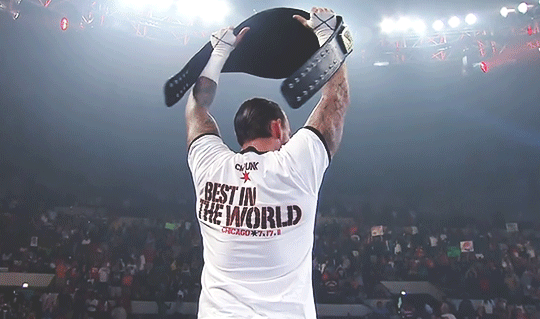
If you would like to see me performing some stuff in my work as a magician, please check out my socials! :)
Instagram/Facebook/Twitter: @Kemptonmagician
5 notes
·
View notes
Text
Portraiture
Group practical
we sat parallel to another person, we had our pencils stabbed through paper so we could not see the paper below and we had to focus only on the face and not look down, basically a blind drawing as far as looking at the drawing but we could see what the object was as we drew it.
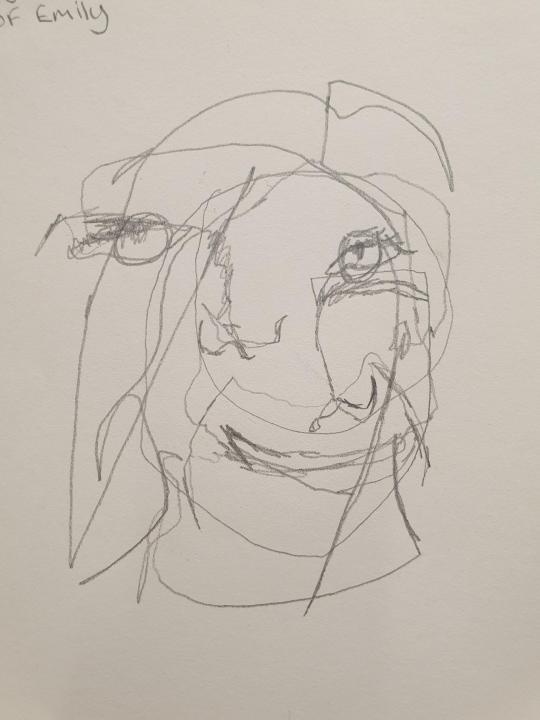
i did the same thing again in graphite and had got a better understanding of proportion considering we could not see the drawing.

we then chose a unique image of ourselves, well mine was rather unique and we did a rough sketch to help us decide what we wanted to draw for our social realism drawing, i was quite impressed by my sketch the proportions were not half bad.
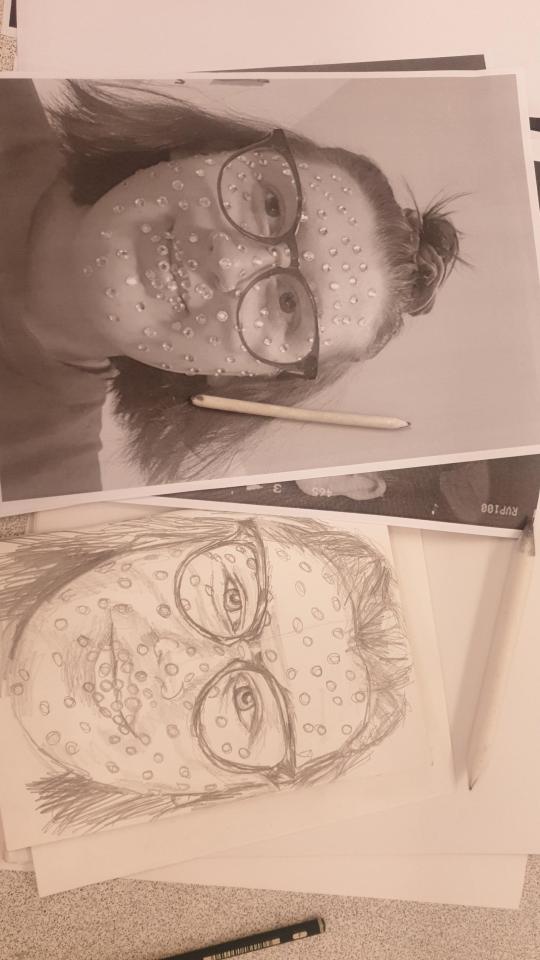
photo REALISM
i chose to just do the center of my face as i felt it would look the best in the social realism style, i then grid my drawing in 4 by 5 squares and did the same to my paper before then beginning my drawing of the outline and basic shapes in order for me to add tone and texture later on
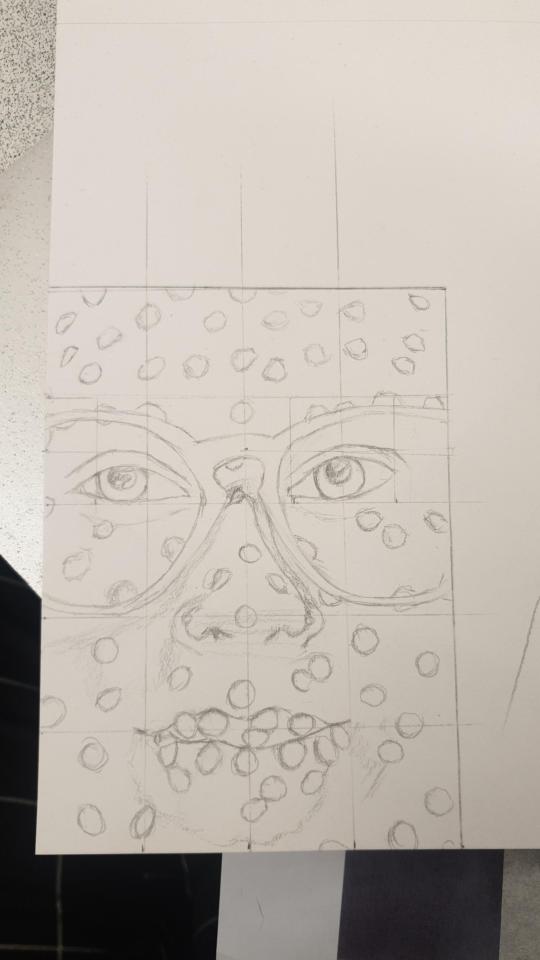
what is photo realism?
photo realism is a form of art where a drawing or painting looks absolutely identical to the object or photo it has been drawn from, so much so you cant tell the difference between the two, it takes time, patients and a lot of skill.
but most of the art community don’t consider this to be an art form.
Many would argue that the technical skill required to make Photorealism art can be exceeded by a decent color photocopier or a computer, thus avoid to use the word art in such context, but this discussion brings us to an analogy of photography. If photography is merely capturing an image of what is already there, where is the art in that? It is right there in the photographer’s perspective, the exact choice made by the person wielding the camera in what to capture and from which angle, moment and perspective. If a person creating a photorealistic recreation of a photograph doesn’t have that “artistic” input of a photographer, then what is artistic about the process? Some would say even those renditions are not strict interpretations of photographs, instead, they incorporate additional, often subtle, pictorial elements to create the illusion of a reality which does not actually exist, or cannot be perceived by the human eye.
In the end, as in many things in art, and life in general, the final conclusion remains behind the individual perspective
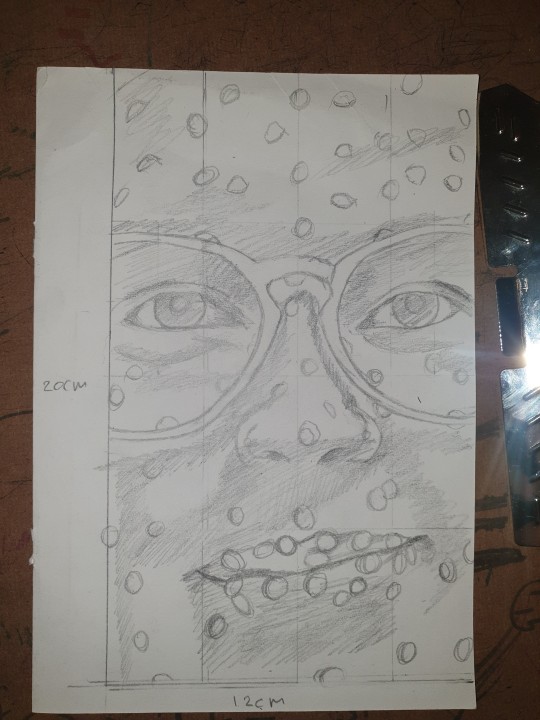
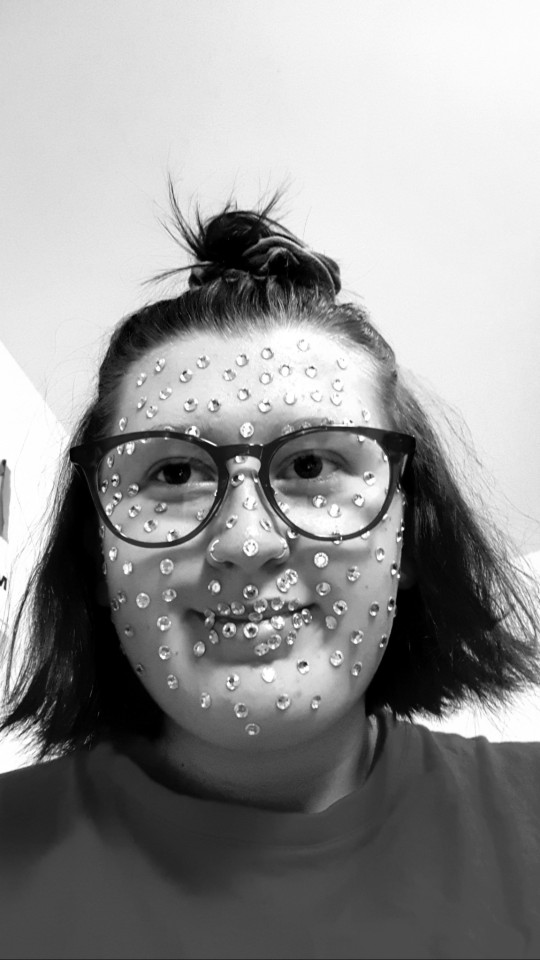

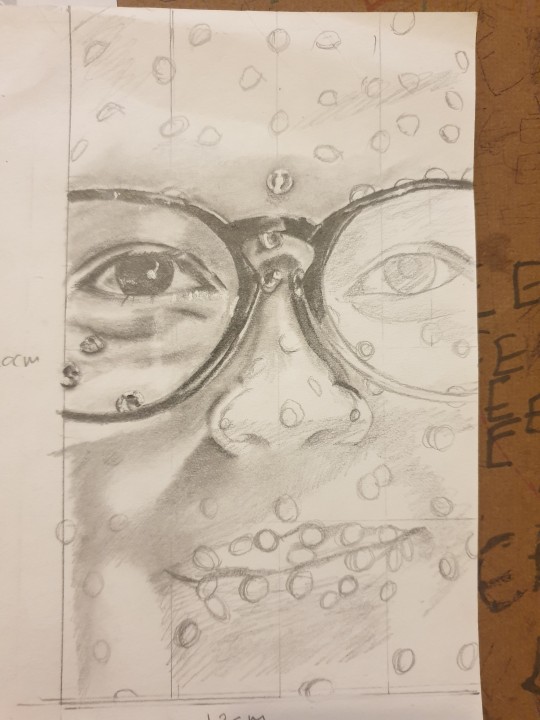
Da Vinci
Long recognised as one of the great artists of the Renaissance, Leonardo da Vinci was also a pioneer in the understanding of human anatomy. Had his ground-breaking work been published, it would have transformed European knowledge of the subject.
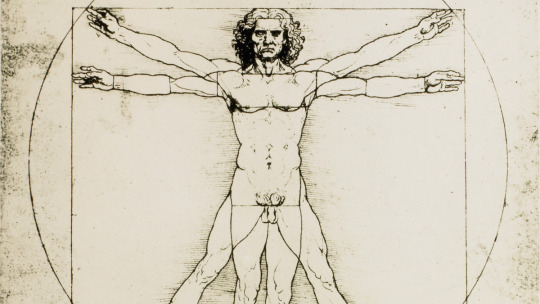
https://www.rct.uk/collection/themes/exhibitions/leonardo-da-vinci/the-queens-gallery-palace-of-holyroodhouse/explore-the-exhibition#/
At the outset of Leonardo’s career, anatomical illustration was in its infancy. To convey the three-dimensional form of the body and to show how it moves, Leonardo had to develop a whole range of new illustrative techniques. His challenges were in many ways the same as those faced by anatomists today, and some of Leonardo’s drawings are remarkably similar in approach to modern medical imagery, such as MRI and CT scans and 3D computer modelling.
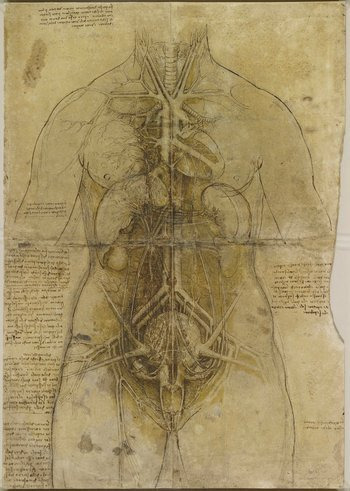
Studies of Human Proportion
While studying Vitruvius for his work on the Milan and Pavia cathedrals, Leonardo became captivated by the ancient Roman architect’s detailed studies of human proportions and measurements. In addition, when he was measuring horses for the Sforza monument, he became interested in how they related to human proportions. Comparative anatomy appealed to his instinct for finding patterns across different subjects. So in 1490 he began measuring and drawing the proportions of the human body.

The construction lines and all of the annotation almost take away from the actual subject and become more of the focus, which was the main idea anyway It was not meant to be a work of art, but rather a manual for how to create it.
Da vinci was a polymath, a person of wide knowledge or learning. He was not only an artist but a scientist, sculpture and an architect.
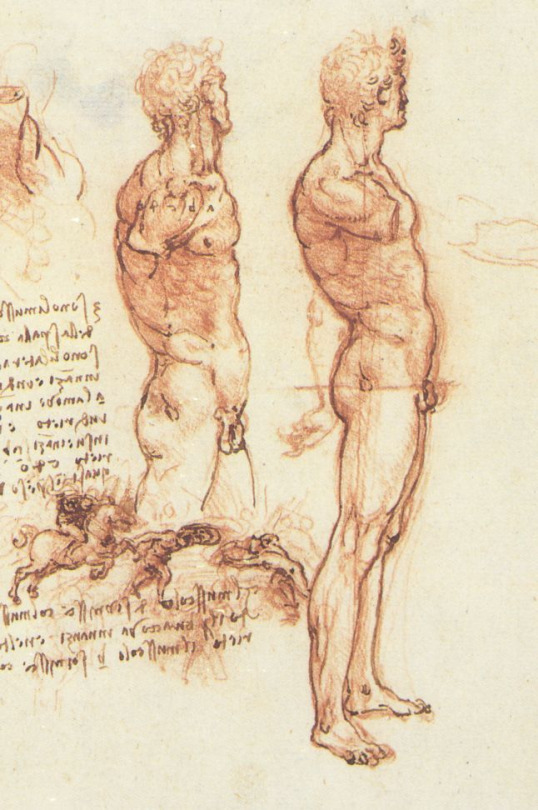
Frida Kahlo
was a Mexican painter known for her many portraits, self-portraits, and works inspired by the nature and artifacts of Mexico. Inspired by the country’s popular culture, she employed a naïve folk art style to explore questions of identity, postcolonialism, gender, class, and race in Mexican society. Her paintings often had strong autobiographical elements and mixed realism with fantasy. In addition to belonging to the post-revolutionary Mexicayotl movement, which sought to define a Mexican identity, Kahlo has been described as a surrealist or magical realist.
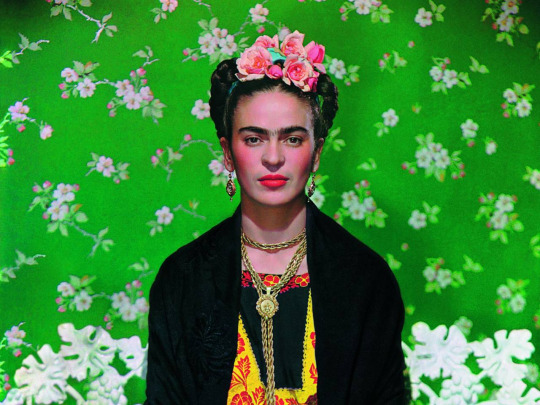
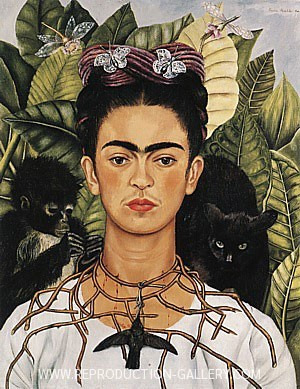
Kahlo’s paintings often feature root imagery, with roots growing out of her body to tie her to the ground. This reflects in a positive sense the theme of personal growth; in a negative sense of being trapped in a particular place, time and situation; and in an ambiguous sense of how memories of the past influence the present for either good and/or ill.[110] In My Grandparents and I, Kahlo painted herself as a ten-year holding a ribbon that grows from an ancient tree that bears the portraits of her grandparents and other ancestors while her left foot is a tree trunk growing out of the ground, reflecting Kahlo’s view of humanity’s unity with the earth and her own sense of unity with Mexico.[111] In Kahlo’s paintings, trees serve as symbols of hope, of strength and of a continuity that transcends generations.[112] Additionally, hair features as a symbol of growth and of the feminine in Kahlo’s paintings and in Self Portrait with Cropped Hair, Kahlo painted herself wearing a man’s suit and shorn of her long hair, which she had just cut off.[113] Kahlo holds the scissors with one hand menacingly close to her genitals, which can be interpreted as a threat to Rivera – whose frequent unfaithfulness infuriated her – and/or a threat to harm her own body like she has attacked her own hair, a sign of the way that women often project their fury against others onto themselves.[114] Moreover, the picture reflects Kahlo’s frustration not only with Rivera, but also her unease with the patriarchal values of Mexico as the scissors symbolize a malevolent sense of masculinity that threatens to “cut up” women, both metaphorically and literally.[114] In Mexico, the traditional Spanish values of machismo were widely embraced, and as a woman, Kahlo was always uncomfortable with machismo.[114]
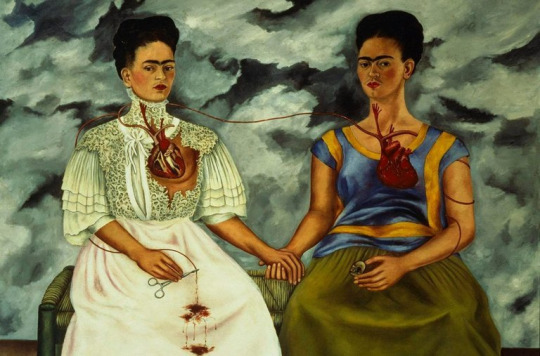
image taken at the MoMa in Nyc
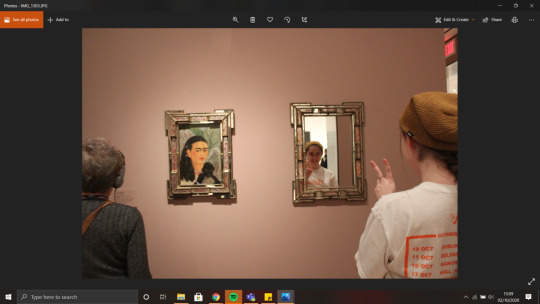
Fulang-Chang and I depicts Kahlo with one of her pet monkeys, interpreted by many as surrogates for the children she and Diego Rivera were unable to conceive. The painting was included in the first major exhibition of her work, held at Julien Levy Gallery in New York in 1938. In the essay that accompanied the show, the Surrealist leader André Breton described Kahlo’s work as “a ribbon around a bomb” and hailed her as a self-created Surrealist painter. Although she appreciated his enthusiasm for her work, Kahlo did not agree with his assessment: “They thought I was a Surrealist but I wasn’t. I never painted dreams. I painted my own reality.” Kahlo later gave this painting to her close friend Mary Sklar, attaching a mirror to it so that, if Sklar chose, the two friends could be together.
Tai Shan Schierenberg
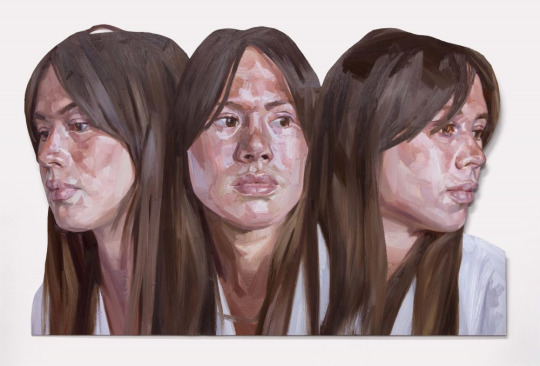
Tai Shan Schierenberg lives and works in London. He graduated from the Slade School of Art in 1987 and in 1989 won first prize in the National Portrait Gallery’s John Player Portrait Award. He was then commissioned to paint Sir John Mortimer for the Gallery. The National Portrait Gallery also holds his portraits of Lord Carrington from 1994, Lord Sainsbury, 2002 and most recently Seamus Heaney from 2004. Other noted commissions include Professor Stephen Hawking, Sir John Madejski and a double portrait of Queen Elizabeth II and the Duke of Edinburgh. For Schierenberg, there is an emotional charge that comes from the different textures and densities, and ultimately the light conditions, that occur in a place at a certain time. He describes his process in 2010: Painting and painting and painting, endlessly exploring ideas in paint on canvas, always painting my way. Finding that over time I can’t see the trees for the paint. Sometimes its good to try a new way, a different path, expose oneself to the vagaries of chance - and see the trees again.
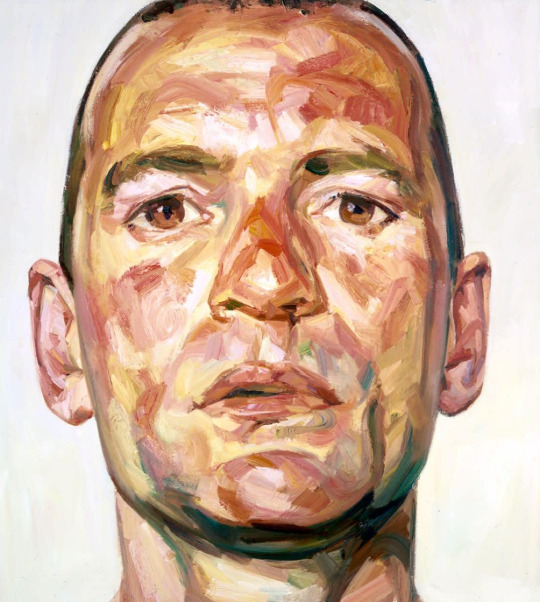
Before he finishes a commission, Tai-Shan Schierenberg usually splatters a bit of paint in the corner of the portrait. It’s not a stylistic move – the brushstrokes in his paintings are fluid but the images themselves are representative – but rather one which gives the subject something to complain about.
in the image above you can clearly see the texture and markings on the canvas, the artist uses oil paint on canvas and applies it using a pallet knife and a large brush, making various large strokes in the work. this gives a rough texture and edge to the piece.
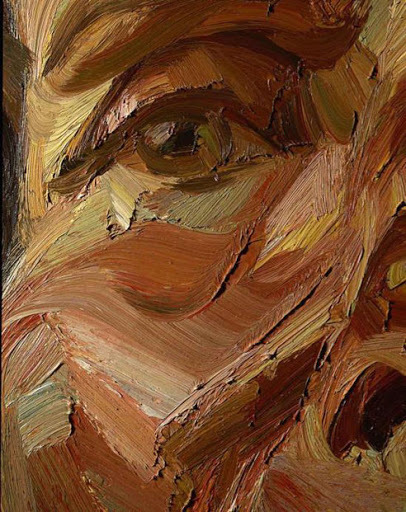
These instinctive visual images refuse to betray the plasticity of the medium. Unlike Freud, Schierenberg sees paint simultaneously as flesh. It is exactly this technique that establishes the major paradoxes characteristic of his work. It is both abstract and realist, edgy and sensitive, grand and inconclusive, violent and melancholic, physically intense and aesthetically detache
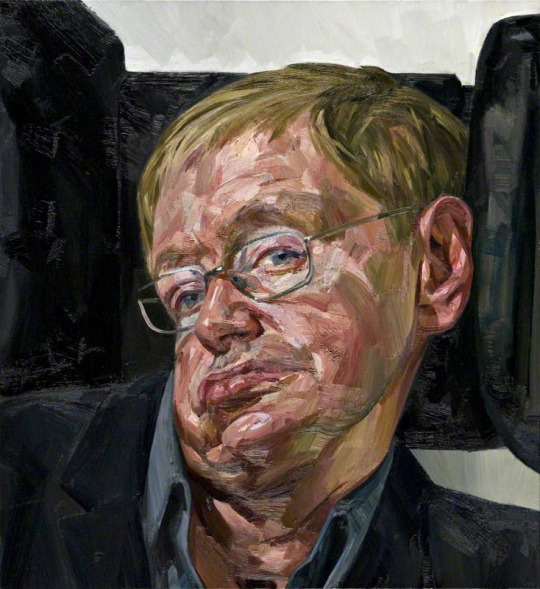
Lucian Freud
was influenced by surrealism, but by the early 1950s his often stark and alienated paintings tended towards realism. Freud was an intensely private and guarded man, and his paintings, completed over a 60-year career, are mostly of friends and family. They are generally somber and thickly impastoed, often set in unsettling interiors and city scapes. The works are noted for their psychological penetration and often discomforting examination of the relationship between artist and model. Freud worked from life studies, and was known for asking for extended and punishing sittings from his models.
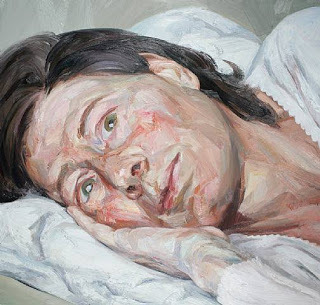
one of my chosen artists, tai shan sheirenberg seems to be heavily influenced by the style of lucian freud yet he made his own style, they both use the same meduims, oil on canvas also.
here in the colder tones we have a painting by lucian freud, you can see the texture of the brush strikes that help carve out the facial features.
here is a painting by tai shan, the tones are a lot warmer, they are not of the same person tho they look similar, you can see the brush strokes again on this image that help carve out the facial features, tho they are a lot more prominent in this painting as thats tai shans style, you see paint before you see the face .
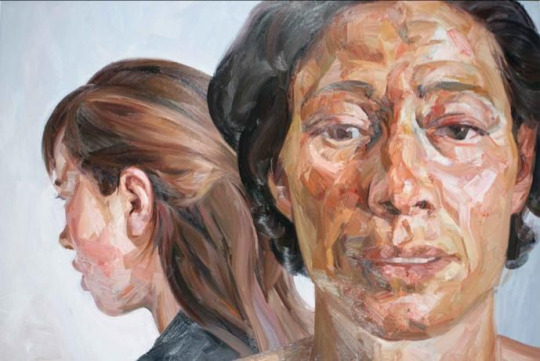
Interpreting line
The Visual Element of Line is the foundation of all drawing. It is the first and most versatile of the visual elements. Line in an artwork can be used in many different ways. It can be used to suggest shape, pattern, form, structure, growth, depth, distance, rhythm, movement and a range of emotions.

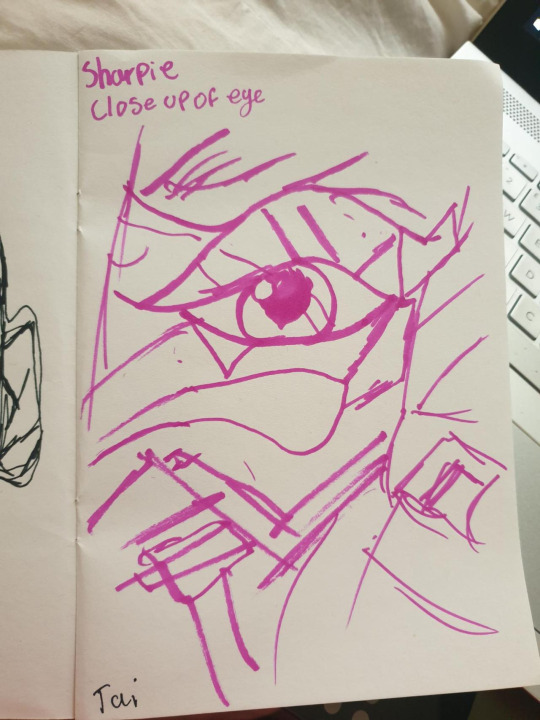

We have a psychological response to different types of lines:
Curved lines suggest comfort and ease
Horizontal lines suggest distance and calm
Vertical lines suggest height and strength
Jagged lines suggest turmoil and anxiety
The way we draw a line can convey different expressive qualities:
Freehand lines can express the personal energy and mood of the artist
Mechanical lines can express a rigid control
Continuous lines can lead the eye in certain directions
Broken lines can express the ephemeral or the insubstantial
Thick lines can express strength
Thin lines can express delicacy
2 notes
·
View notes
Text
AN INTERVIEW WITH TOBIAS FORGE.
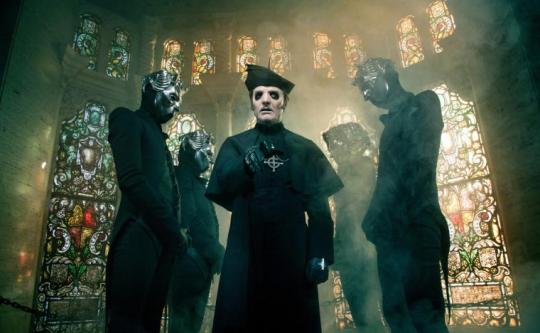
The Swedish rock band Ghost will be performing at the TaxSlayer Center on October 8. Coming off a European stadium tour with Metallica, the group has headlined summer festivals and has embarked on a massive North America tour that includes New York, Los Angeles, Chicago, Toronto, Boston … and Moline.
Tobias Forge is Ghost's creative force, front man, singer, songwriter, musician, and architect of the storylines woven through the band's albums, videos, webisodes, and live shows. Although Ghost has been awarded a Grammy and had three consecutive number-one songs on the Billboard mainstream charts, it is the musicians' tongue-in-cheek anti-pope appearance that truly defines them. In a July 30 interview, Tobias spoke about developing the band's visual identity and his aspirations as a filmmaker.
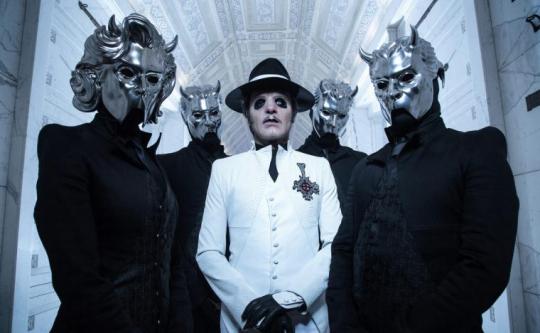
Visuals define Ghost’s image. Are they as important as the music?
Oh, absolutely. Even though I don’t sit down and specifically draw and paint our album covers, I’ve always been very specific in what I wanted. And how I wanted the record sleeve to embody the record I made.
As a record collector, I am more than often compelled by the artwork of a record. I’m a firm believer in a really nice-looking record sleeve. And that makes me want to like the record more. Today, even though people might not consume a recording in the physical way we used to, it’s definitely a case of your visual presentation that accompanies whatever file they are going to listen to. If the graphic content is aesthetically pleasing to the eye, it opens up an avenue into people’s souls. I know this because I’m so easily charmed by record sleeves.
Are the album titles also important?
Absolutely. There needs to be a sort of a narrative between the artwork and the title of the record. And, of course, its content. In some way or form, it helps if the title summarizes a little what the record is about. Usually, most good records have some sort of theme – even though the songs might be about different things.
A lot of singer/songwriters go through phases: it’s the “divorce” album, it’s the “I’ve just gotten married” record. “I’ve just became a father or mother” record. And “now I’m older” record. And “the midnight crisis” record. And “the beard” record. In some way or form, it’s good to communication a little of what kind of state of mind you were in while making it or which state of mind you want the listener to think you were in. As opposed to just leaving it blank.
There’s a fascinating word play in your titles. Do you enjoy playing with words? Creating a sense of mystery through words?
Very much so. I’m also very much influenced by cinema. Even though I know there’s no film called Infestissuman (the title of Ghost’s second album), I also try to come up with a title for a record that could be a film as well. Like a big epic, three-hour mastodon matinée film. (Laughs). I’d like to make a film called Meliora (the title of Ghost's third album).
I understand that you have aspirations to be a filmmaker. That you’re working on a film. Could you speak about the film?
About a future Ghost film?
Yes.
I cannot speak about it in detail. But, yes, I’ve always been very fascinated with the art of filmmaking.
I definitely am in the process of exploring the possibilities of combining my musician career with a film project. Let’s put it that way. And as with anything cinematic, it takes a lot of time – and way more politics – than making a record.
In the process of this, I’m trying to vet my brain and my ideas into being super-sober about making a film that is actually needed and called for and will turn out really great – so that it doesn’t just became a really confusing project.
Over the course of rock history, there are a few films that have been made that are really cool. Even though many of them end up in more of a cult section because they are … weird. I don’t mind weird at all. I grew up watching a lot of films like that.
I would love to make a film. I would love to make it good-weird, but it needs to be good as well. It needs to be something that people can watch. I’m currently in the process of learning if I can.
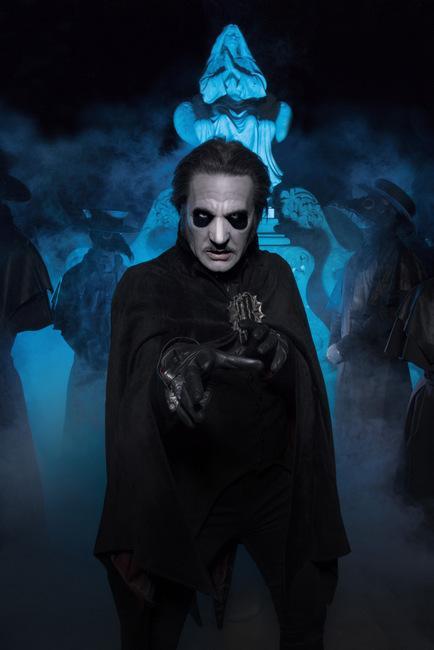
The humor in your webisodes complements your albums, which sound epic. That’s a fascinating combination.
Yes. Just to give you a hint of what I spoke of in my previous answer about a possible film: a full-length film would be in that vein. Based on that sort of mythology. I believe that there is something more to tell within the storyline – within the concept of what we’ve outlined briefly – in those episodes.
Most of my favorite films have some sort of absurd humor in them.
I think it’s important for films, too. Just as with any dish at any restaurant, there are certain ingredients that you need to have. Even if its just a pinch of salt. Usually you need that. There are certain aspects in there that make it a consumable plate.
Even if you’re making a horror film or drama or thriller, there needs to be some sort of comic relief at some point. I guess what would change in a long format, is that it wouldn’t be as comedic every minute as it is in the short form.
As there is comedy in a horror film, your music has a unique dichotomy. You have metal riffs and an understated singing style. That’s very appealing to me. Was this natural to you? Is it something you developed?
Everything develops on the basis that it is being received. So I believe that to a certain degree if you’re an artist – be it a musical artist or a filmmaker or a writer or a painter – you need to be somewhat auditive when it comes to the needs and the wishes of your receiving part. As much as any aficionado of subculture, I like a lot of artists that just go against everything and make whatever that comes into his or her head regardless of what a public thinks. But most successful artists have in some way or form nurtured the relationship they have between themselves and their audience. The way that you would nurture any relationship with another part – be it a partner in life or a partner in work. There’s some sort of collaboration.
If you look at big bands that went from debutantes playing clubs to big arena acts, their first records are usually slightly more raunchy and maybe faster in tempo and might include a little bit more complicated arrangements. What you usually find over the course of time and further into their careers, they start making records that are more moderately paced. Or they are paced in a different way. Certain songs don’t really translate very well in a very, very big room in front of thousands and thousands of people. Common lingo among rock fans is that, “Oh, they sold out. They just want to sell records.”
No, they write music that will feel comfortable in the setting – in the forum in which they are performing these songs.
You do what you feel is good for both parties, and that’s how you develop your relationship with your crowd. You don’t do this 100 percent all the time. But you should be aware that if you start doing shit that your significant other – in this case the crowd – doesn't like, you’d be stupid if you continue doing it.
Coming out of a Swedish metal tradition, your music is surprisingly melodic. Sometimes hauntingly beautiful tunes with beautiful choirs. How did this sound emerge?
I have always listened to lots of different music styles. Everything more or less oriented in punk and rock. Except for my love for underground extreme metal from the '80s, most of the other types of music that I listen to are actually quite melodic. I’ve always been melody driven. Ninety-nine percent of the time, my way of listening to a song is to listen to the melodies. It doesn’t hurt if there’s a really good rhythm.
For me, melody is like the dialogue of a film. If you just make a film with just background, it might be an interesting idea. But if you want the film to be of value, you definitely need to have someone within frame saying something. And it’s important what he or she is saying. That, for me, is the melody of a song.
But then you can pimp the song out in so many ways and that’s part of the craft of songwriting. But without a melody, the likelihood of a song being good is not big.
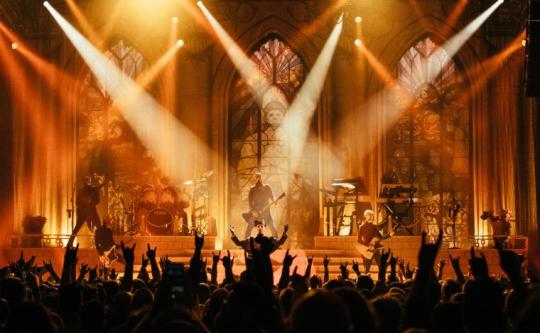
On your first album, I understand that you played all of the instruments except the drumming. Is it hard to only be the front man in live performances?
No, I’ve learned how to deal with that. I just had to sort of disregard how I viewed myself. I always thought that I was going to be the lead guitar player of a band. A Keith Richards in the band. My intention with Ghost was the same. During the first four years – between 2006 and 2010 – up until the very last moment of recording the album, I still thought that, just before mixing the record, that we better find a singer. We never found a singer. So we kept my demo vocals basically. I re-sung them to get better takes. They were on the demos just to explain how the song goes.
That’s the way I’ve always worked. When I write a song I always play everything. So regardless of who might have executed it on a record or executed it on stage, it’s always my way of playing. If I were to play a bass in another band, that’s how the bass would sound. If I were to play drums in a band, the basics of how I arrange songs, that what you hear in Ghost. That’s how I play the drums. Then I get a really good drummer in to play really well, but that’s how I approach thought in all these different instruments. And that has become a signature thing for Ghost.
That makes writing records easier. That makes having a band together very hard. But that is just the nature of the beast. It’s just coming to terms with accepting and owning that. It has definitely taken some time.
Fame doesn’t seem to be your prime mover. What do you think of fame now that your identity has been revealed?
I have, as much as anyone who has any inclination to rock in a band, always wanted to be in a well-known rock band. What comes with that is fame. Up until I was probably 30 years old, I wanted to be very famous. And I wanted to be known. After I started working with Ghost, I was definitely enjoying … . I wouldn’t say anonymity. I was never anonymous. But Ghost and the visual side of Ghost was definitely overshadowing anything that I was. Over the years of being in a well-known band without being a very well-known person myself, I actually started to prefer that over being a recognized person myself. Despite having wished for that before, there are definitely two sides of being recognized. When you dream about it, you only see the upsides. It’s only about the perks of fame.
I don’t feel in any way or form that my so called “coming out” was negative. It was just a weird thing having to deal with a higher level of recognition so far into your career. That was a little bit weird because it usually comes gradually.
For example, for seven years I never took photos of people. If you ever saw a photo of me, it was always a friend of mine that took a photo and I thought it would never be posted online. Or it was someone taking a photo of me without me knowing it. So all of a sudden, when I was out of the closet, you couldn’t really tell people any more that you wouldn’t take a photo with them. All of a sudden, you can’t say no to anyone.
That is something I suddenly had to adopt to because it was very easy earlier to say no, no, no, no. You know how it is. Now if I say no, someone could be very offended. Which is a little sad because I might be on my way into a car that is leaving in 10 seconds and we’re in a hurry. And there are 10 people by the car and you’re like, “I really don’t want to do this to you but … .” And I can’t even finish that sentence before the door is closed. And people get offended. I don’t want people to be offended and sad.
Fame is something that sort of came overnight. But it’s a good problem to have.
All content owned by River Cities Reader
80 notes
·
View notes
Note
Hello there! You’ve posted quite a bit about dark ecology, which I absolutely love as a concept. However, I’ve found Tim Morton’s work can be a bit dense for folks without a philosophy background — do you have any “starter” reading recommendations for people who’d like to learn more before diving headlong into Ecology Without Nature? Thanks!
Despite how over-the-top excited I was to see this great ask, I held-off on answeringimmediately because I wanted to make sure that I chose my words very carefully.Thank you so much for reaching out. (And I’m so sorry! I’m always very grateful forquestions and try to respond much more quickly!) Regarding how inaccessible Morton’sjargon-heavy and convoluted writing can be, I deeply relate. It’s dense, andafter 10 years of reading, I still cannot fully vouch for or clearly explainobject-oriented ontology; Morton can be floofy and difficult. However, I think I’m a relatively better acolyte of dark ecologyand Morton’s more overtly ecological material; I also think that Morton is much more accessible in interviews and when speaking in-person and in recorded lectures. Pertinently, the publishers of Morton’s latest book (Being Ecological - 2018) have added a kind of goofy, informal, and marketable subtitle to the book: “A book about ecology without information dumping.”
In my experience, it seems to me that most people with any kind of passionateinterest in ecology – whether or not they had access to a formal universityeducation – already intuitively understand much of what dark ecology proposes.This would include things like the intimidating scale and vastness of systemslike a local microhabitat, “the sea”, or a regional climate itself; the complex interconnectivity and interdependency of differentspecies; the fragility of the biosphere in the face of human activity; how an hierarchical mentality that devalues ecological landscapes willalso devalue human life; etc. I think a lot of people intuitively recognizethese things, even if not everyone can describe them or explain systems ecology in the most technical terms.Dark ecology might be of interest for those looking to more clearly discuss ordefine these “realities.” First andforemost, dark ecology is arguably about defining a more ethical and comprehensive approach to ecological thinking to specifically cope with the complexity of systems ecology, the social and environmentaldegradation of the Anthropocene, the climate crisis, and the sixth massextinction event.
Before I lose anyone’s interest with a wall of text: I think that peopleinterested in the global climate/ecological crisis; the Anthropocene; weirdfiction (!); anthropology; ethnoecology; the intersection of social injusticewith environmental degradation; capitalist realism and retrofuturism; biosemioticsand animal emotion; and ecology in general would be interested in checking out darkecology.I like that the dark ecology concept tries to grapple with the “apocalyptic” feeling of the current ecological crisis, and I also like that the concept tries to bridge the apparent gap between the humanities and ecology by describing how environmental degradation relates to social injustice.
In this egregiously long post, I’ll try to offer some accessiblereading recommendations on dark ecology and I’ll try to use the question as aspringboard to define dark ecology. Unfortunately, I, myself, come across asdense and convoluted, so if you want toavoid parsing through all of my text here, I’ve numbered each of the readingrecommendations/resources below.
:)
-


Art installations from the Dark Ecology Project art sites - a collaboration with Timothy Morton - in Norway. The first piece is by resident artist HC Gilje.

What is dark ecology?
- Essentially, dark ecology is a wayto update ecological thinking for the Anthropocene and for the sixth massextinction event; for an era of “climate anxiety” and loss. It’s a conceptmeant to improve ecological thought and to correct older inadequacies in Westernnaturalism, which often assumes that humans are separate or detached observers fromthe landscapes that we study. - Dark ecology also involves the humanities, and anthropology especially. Thisis because the concept implies an acknowledgment that Indigenous and non-Western cosmologies (world-views) are legitimateand helpful frameworks for building sustainable ecological communities;understanding the egalitarian ecological relationships among organismsincluding humans; and acknowledging that other living things are deserving ofethical treatment. - The concept of “weirdness” is veryimportant in dark ecology, as is anxiety. (To learn more about this aspect of weirdness, see Morton’s article in Changing Weathers, linked below.)- Another concept originally coined and defined by Morton and centrally important to dark ecology isthat of “hyperobjects”: things sobig and/or abstract that humans struggle to conceive of their magnitude,something like “climate” itself or an abstract “object” like an “interspeciesrelationship.”- In dark ecology, there is an implied (and sometimes explicit) critique of the“extractivist” mentality and its friends (industrial resource extraction;monoculture farming). Morton sometimes phrases this as a critique of “agrilogistics”: the industrial-scaleover-harvest of natural resources backed by systemic social inequality, a sharedmentality prevalent in early hydraulic civilization, empires, the European feudalera, and the current era.- There is also an implied critique of socialhierarchy; essentially, dark ecology proposes that the problem of human/industrialmismanagement of landscapes and other species is closely tied with socialhierarchy and human mistreatment of other humans. Thus, dark ecology impliesthat sexism, racism, violence, etc., stem from the same worldviews thatpropagate environmental degradation.- Where object-oriented ontology arguablycomes most into play in Morton’s writing is regarding biosemiotics and animal/plant “emotion.” Dark ecology can be readas implying that every other living thing has some kind of subjectiveexperience and agency, even if it doesn’t translate into recognizable humanemotions or doesn’t resemble the sentience of humans. OOO suggests that othernon-human things are still “real” or “alive” at some scale. (This is the aspectof dark ecology that I understand least!)- This aspect of biosemiotics also unites dark ecology with the ontological turn in anthropology, arecent and still active movement to decolonize anthropological thinking. Theacademic discussion of OOO and dark ecology around 2007-2012 was very influentialon anthropologists working to validate non-Western cosmologies that perceive the natural world as a sort of collective, with cooperation among species.- Dark ecology is also useful for evaluating urban geography and urban planning in the 21st Century (“theera of the city”), because related concepts like “hyperobjects” help to conceiveof urban areas as vast entities with sometimes invisible influences overculture and ecology planetwide.- Playfulness and joy are important in Morton’s understanding of the relationship between humans and landscapes/animals/ecology. (You can read more about this aspect in a couple of the resources listed below, including the first video resource listed and the article about “dark ecological podcasts”!)- Mark Fisher’s “capitalist realism” is now a widely recognized concept, Morton has done something similar with the very popular concept of “hyperobjects”- Thinking of landscapes like this – animals being “alive” in their own uniqueway; ecology being complex and “weird”; seeing ecology and human/social justiceas interlinked – isn’t exactly new at all, especially compared to millennia ofIndigenous cosmologies and environmental knowledge.
Resource 1 - If you don’t want tobe confronted with this long post, one of the best introductions to darkecology comes from the person who coined and popularized the term, TimothyMorton. Since Morton’s really theoretical and sometimes convoluted whenwriting, listening to him speak and answer questions directly seems (to me) tobe an easier way to hear a clear definition of dark ecology and what itentails. So, I’d recommend checking out Morton in this hour-long interview.Here, he explores environmentalism; naturalism; ethical treatment of animals;industrial resource extraction; weird fiction; and the connection between environmentaldegradation and social injustice/hierarchy.
Timothy Morton in Conversation withVerso Books – Verso Books, on YouTube~
This is a great video! However, if I could recommend just one written exploration of dark ecology, it would be this article from Morton.
https://web.archive.org/web/20180316024548/www.changingweathers.net/en/episodes/48/what-is-dark-ecology (What Is Dark Ecology? -- TimothyMorton – Changing Weathers, 2016)
Resource 2 - Here’s a shortervideo (9 minutes) where Morton briefly describes ecological thought; biosemiotics;the development of the dark ecology concept; and the concept’s relationships toenvironmentalism and natural history. ~ Beautiful Soul Syndrome: Towards aDark Ecology (YouTube) ~
Resource 3 - It seems that Morton’smost influential texts are these 4 books:
-- Ecology Without Nature: Rethinking Environmental Aesthetics (2007)-- The Ecological Thought (2010)-- Hyperobjects: Philosophy and Ecology after the End of the World (2013)-- Dark Ecology: For a Logic of Future Coexistence (2016)
You can read the entirety of Dark Ecology (2016) for free online,here.
Resource 4 – A good related book(with much more accessible writing!) is this: Shadowing the Anthropocene: Eco-Realismfor Turbulent Times – Adrian Ivakhiv – 2018
-
These are 6 “classic” books that explore dark ecology:
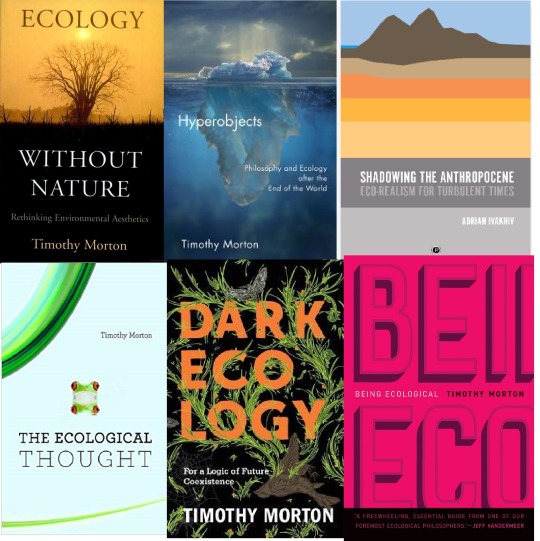
-
Resource 5 - One of the best andmost concise written explanations also comes from Morton himself. Ironically,this introductory was taken off the internet only one week ago, but you canaccess it through the Wayback Machine here:
https://web.archive.org/web/20180316024548/www.changingweathers.net/en/episodes/48/what-is-dark-ecology
~ What Is Dark Ecology? -- TimothyMorton – Changing Weathers, 2016 ~
And the original URL, which you can plug into the Wayback Machine:
www.changingweathers.net/en/episodes/48/what-is-dark-ecology
Resource 6 - A fun read – and agood example of the application of dark ecology, especially involving therelationship between ecology and weirdness/playfulness – would be this article. (It’sa good read even if you’re not a fan of the multitude of “spooky” and “AmericanGothic” podcasts that have been recently popularized.)
~ At Home with the Weird: DarkEco-Discourse in Tanis and Welcome to Night Vale – Danielle Barrios-O’Neill andMichael Collins - Revenant, March 2018 ~
-
A quick definition of dark ecology fromArie Altena:
We have indeed borrowed the term ‘Dark Ecology’ from the work of TimothyMorton. Over the past couple of years he has written a number of booksoutlining an ‘Ecological Thought’ that has no use for the Romantic notion of‘Nature’. He begins to explain this idea in Ecology without Nature (2007) – abook which is also about art and ‘environmental aesthetics.’ In The EcologicalThought (2010) he shows that the ‘ecological thought’ is not nice and green anda celebration of all things natural, but that to really think theinterconnectedness of all forms of life and all things (the ‘mesh’), is dark.[Morton says:] ‘Dark ecology puts hesitation, uncertainty, irony, andthoughtfulness back into ecological thinking. The form of dark ecology is thatof noir film. The noir narrator begins investigating a supposedly externalsituation, from a supposedly neutral point of view, only to discover that sheor he is implicated in it. The point of view of the narrator herself becomesstained with desire. There is no metaposition from which we can make ecologicalpronouncements. Ironically, this applies in particular to the sunny,affirmative rhetoric of environmental ideology. A more honest ecological artwould linger in the shadowy world of irony and difference. …The ecologicalthought includes negativity and irony, ugliness and horror.
-
In Morton’s own words (from “What IsDark Ecology?” – Changing Weathers):
The ecological era we find ourselves in — whether we like it or not, andwhether we recognise it or not — makes necessary a searching revaluation ofphilosophy, politics and art. The very idea of being ‘in’ an era is inquestion. We are ‘in’ the Anthropocene, but that era is also ‘in’ a moment offar longer duration.
What is the present? How can it be thought? What is presence? Ecologicalawareness forces us to think and feel at multiple scales, scales that disorientnormative concepts such as ‘present’, ‘life’, ‘human’, ‘nature’, ‘thing’,‘thought’ and ‘logic’. I shall argue there are layers of attunement toecological reality more accurate than what is habitual in the media, in theacademy and in society at large.
These attunement structures are necessarily weird, a precise term that weshall explore in depth. Weirdness involves the hermeneutical knowingnessbelonging to the practices that the Humanities maintain. The attunement, whichI call ecognosis, implies a practical yet highly nonstandard vision of whatecological politics could be. In part ecognosis involves realising thatnonhumans are installed at profound levels of the human — not just biologicallyand socially but in the very structure of thought and logic. Coexisting withthese nonhumans is ecological thought, art, ethics and politics.
-

An art project by Edward Burtynsky, at National Gallery of Canada exploring the Anthropocene (pictured is a scene from a coal mine in Westphalia, Germany - 2015).
Timothy Morton is a close colleague of Graham Harman – Harman being thetheorist who is most credited with defining object-oriented ontology. BothMorton and Harman were colleagues with Mark Fisher, the now-legendary culturalcritic and theorist who popularized the concept of “capitalist realism.” Thebranch of OOO that Harman and Morton subscribe to is usually referred to as “speculativerealism.”
OOO and dark ecology are closely related - at least in Morton’s work - and tend to be mentioned together(with good reason). An important disclaimer: OOO seems to be even more overwhelming than dark ecology asa concept; I struggle to articulate OOO and really do not understand too muchabout it (so I’m not sure I can provide the best resources for learning aboutit).
From an interview with Morton at WASH magazine:
OOO deals with concepts like “hyperobject” and “mesh.” Can you give us some brief definitions of these concepts?A hyperobject is an entity that is so massively distributed in space and time that you can’t point to all of it at once. Even if you use very advanced prosthetic devices like fast supercomputers, it might still be difficult to map one. The biosphere is a hyperobject. Climate is a hyperobject.The mesh is the interconnectedness of beings in the biosphere. Nowadays I have a higher resolution image for this: I call it the symbiotic real. It’s a loose network of precarious affiliations between beings where who’s “the top” and who’s “the bottom,” who’s “the friend” and who’s “the enemy,” is always in question. It’s a whole that is always less than the sum of its parts, however weird that sounds. (End quote.)
-
So, I am hard-pressed to define OOO, and I can’t personally critique it wellor vouch for OOO as a “good” framework. That said, I take more of a liking tothe dark ecology concept.
-
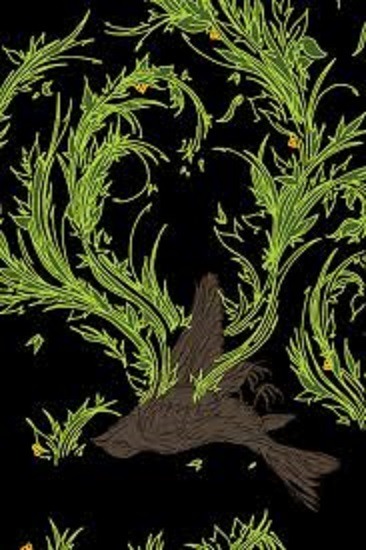
Art from the cover of Morton’s 2016 book, Dark Ecology.
Moreaccessible reading resources:
(7) - One of the best applications of the hyperobject concept is this fantastic essay on how urban megaregions and big cities function as ecological forces: The Urban Hyperobject - Lisa Bremner
(8) ~ Four Questions for the Author: Timothy Morton,Being Ecological – Orion Magazine –September 2018
(9) ~ Dark Ecology InterviewsTim Morton – Lucas van der Velden and Arie Altena – Dark Ecology dot Net – 2014
(10) ~ (Video) Timothy Morton:Dark Ecological Chocolate – YouTube –2017
(11) ~ A Mutable Cloud: On “DarkEcology” and “Confessions of a Recovering Environmentalist and Other Essays” –Jennifer Peterson – LA Review of Books– 2017
(12) ~ ‘A Reckoning for our species’: The philosopher prophet of theAnthropocene – The Guardian – June 2017
(13) ~ A Polar Bear Called Susan: Interview with Lisa Doeland – De Groene Amsterdammer – 2013
(14) ~ Timothy Morton: Ecology Without Nature – We interview the philosopherTim Morton, author of “Dark Ecology”, who proposes that we rethink the way wesee ecology, anthropocentrism and art – Roc Jimenez de Cisneros – CCCB Lab -- December 2016
(15) ~ Timothy Morton regularly posts onand maintains a blog on Blogspot: EcologyWithout Nature
(16) Timothy Morton had collected a list of interviews with other ecologists, theorists, philosophers, etc. that relate to dark ecology. Available here.
-
Again, I think that a lot of people interested in ecology already intuitively grasp much what dark ecology entails. But, I guess it’s nice that the concept specifically tries to grapple with the Anthropocene and what is essentially an “apocalypse” of sorts. It’s a useful framework (at least, it’s been helpful for me).
OK. Yikes.
Very sorry for the ridiculous length of the post. I hope this is useful for someone.
Thanks again for reaching out!
392 notes
·
View notes
Text
Hybrid Rainbow
Joy has always been a rare and precious commodity. I would argue, though, that in the developed world (Wherever, exactly, that is), it has become somewhat less rare in recent times, as standards of living and education continue to go up. That’s an absurdly privileged thing to say, I realize, but I’m trying to start this thing as evenhandedly as I can. I understand about suffering and poverty; I’m reading A Tree Grows In Brooklyn right now, even! Okay, saying we’re closer now than ever to utopia is going to smack of ignorance no matter how you phrase it, but it also strikes me as undeniably true, in the grand scheme of things. I think most people--aside from the fascists--would refuse a one-way trip in a time machine to any previous era, or at the very least, would recognize that it wouldn’t improve much of anything for them. As unruly as our age is, it’s still probably the best one we’ve gotten thus far, and as the boot-heel of oppression starts to ever so slowly ease up its pressure on the necks of the long-suffering masses, the question has begun to enter into the collective consciousness: what is to be done with joy when it begins to fall, unbidden, into your life with something like abundance? What is to be done if moments of joy no longer must be pried with great effort and sacrifice from the rockface of life, but lie strewn liberally throughout our days, needing only the will and lack of embarrassment to seize them?
Thus far, the latter-day generations have faced up to this problem with decidedly mixed success. The idea that expecting anything other than the very worst leaves one vulnerable to the universe’s cruel whims has been stamped upon the human brain for centuries, and has left many sadly unable to recognize their own privilege (Which, by the way, is a big part of why a whole lotta white folks refuse to admit they have it better than anyone else and continue to dig their heels in against progress because to them it looks like cutting in line). It is still widely accepted that constantly finding joy and peace and purpose in one’s own life is the purview of children and children alone, that it is a naivete to be grown out of. We have the impulse always within us to be hard, to be warlike, to show the world that we’re not weak and frivolous but monsters to be feared, without emotions to be appealed to or ideals to be fallen short of.
Remedying this problem has turned out to be one of the primary functions of counterculture. If it is often unhelpful to simply look at the entire value system of one’s parents and say “Fuck that”, as it tends to foster a rather negative self-definition, still, if part of that value system is a deeply entrenched distrust of happiness, “Fuck that” may be exactly the response called for. The beauty of “Fuck that” is that it leaps past the slow loss of faith in something and arrives immediately at a flat rejection of it, and since much of the history of civilization has been bound up with blind faith in arbitrary and harmful things, the ability and the courage to flatly reject something, to give it no credit for however widely accepted it is but to dismiss it as bullshit from the ground up, is a step forward in human consciousness tantamount to the reinvention of the wheel.
The great irony of the end of the sixties is that all the hippies were miserable for no reason: they won. Rock n’ roll did change the world, it just didn’t immediately transform it on every level into an unrecognizable nirvana. For all the apparent emptiness of its utopian dreams, the basic thrust of the thing worked out just fine: that particular cat will never be put back into its bag, and those ideas are now out in the ether forever, always waiting for someone to find them and be inspired to change their own life and the lives of those around them for the better. The same goes for the punk rock revolution a few years later: they may not have brought the bastards down, but they did successfully bring personal liberation to a lot of people, and poured exactly as much gas on the fires of populism as they intended to. Culture, and in particular art and in particular music, cannot, unassisted, change the world, but it can change your world, and has been changing small worlds all over the frigging place at least since those mop-topped Brits set foot on American shores and probably since Johnny B. Goode learned to play guitar just like a-ringin’ a bell.
The thread can get lost, however. Culture is always a reflection of the people, and the people still spend a lot of their time bored, frustrated, and terrified of letting on that they have feelings about stuff. Young people especially, formerly the eternal pirate crew waving high the flags of “Liberty” and “Up Yours”, in recent times have often capitulated and resigned themselves to no more than a few stray moments of fun pilfered from the fortresses of the almighty Money Man-Kings, usually in the form of drugs, sex, and reckless self-endangerment. The cost of the hippies and the punks giving up their battles is that the counterculture lost its intellectual leadership, at least until the resurgence in political literacy in the 2010s. In the wasteland following the 70s, there were no John Lennons or Joe Strummers to look to for guidance; even the people who were elected to speak for their generation seemed adamant that there was fuck-all they could really say. Yeah, it’s nice to know that someone else feels stupid and contagious, but that’s not really a direction, is it? The generation-defining message Kurt Cobain and his peers sent out was “We’re all way too fucked up to do anything about anything”, and that introspective moodiness pervaded American underground rock music from the invention of hardcore at least all the way up to the moment Craig Finn watched The Last Waltz with Tad Kubler and said “Why aren’t there bands like this anymore?” and set out with rest of the Steadies in tow to remind everyone that music can save your immortal soul and that hey, that Springsteen guy was really onto something, headband and all, and together they all successfully ushered in the New Uncool and now we’ve got Patrick Stickles wailing that “If the weather’s as bad as the weatherman says, we’re in for a real mean storm!” and Brian Fallon admitting “I always kinda sorta wished I looked like Elvis” and everything’s great, except it’s not, everything’s fucked, but rock n’ roll is here to stay, come inside now it’s okay, and I’ll shake you, ooo-ooo-ooo.
The point of all this is my belief that even with the responsibility rock music has to provide cathartic outlets for dissatisfaction, is has an equal or greater responsibility to provide heroes. I think it’s time we all got over pretending that we’re better than the need for heroes, because we all insist on having them anyway, imperfect roses by any other name, and we’d do a hell of a lot better selecting them if we just admitted what we were after. We don’t just want particularly talented comrades, we want King Arthur, Robin Hood, Superman, Malcolm Reynolds. Damn it all, they don’t need to be perfect, they don’t even need to be all that great really, and yeah, Arthur dies, and Robin never gets Prince John, and Superman can’t save everyone, and the war’s over, we’re all just folk now, and John Lennon beat women and Van Morrison is a grumpy old fart and John Lydon’s a disgrace, but it’s the faith that counts. The faith that there’s something greater than ourselves that some people are more keyed into than others, and that whatever they can relay from that other side is what’ll see us through. All the best prophets are madmen, and madmen aren’t always romantic fools; sometimes they hurt people, or fail at crucial moments due to a compulsion they can’t control. Let he who is without sin etcetera, right? Why not cast aside realism and sincerely believe in something or someone, huh?
I believe in the Pillows. I don’t know hardly anything about them; my expertise of Japanese culture and history extends to the anime I’ve seen and that “History of Japan” YouTube video that made the rounds a while back. I can’t locate them within the Japanese music scene; all their western influences seem obvious to me, and the rest I know nothing about. They’re the only rock band from their country I’ve listened to any great amount of, I don’t speak the language they mostly sing in, I don’t even know their career very well. The particulars of any experiences they might have had that motivated them to make the art they make are not ones I could possibly share in, so, saying that I “Relate” to their work sounds a little preposterous. They ought to be a novelty to me, a band that clearly likes a lot of the same bands I do despite hailing from a foreign shore, marrying that shared music taste with a cultural identity I have nothing to do with, a small, nice upswing of globalism pleasing to my sense of universalism but not having any kind of quantifiable impact on me.
Yet I, like a good many other westerners, believe in the Pillows. I’m a little buster, and my eyes just watered as I wrote that. In fact, it’s likely because of the barriers of language and culture that exist between us that my belief in the Pillows is so strong. Pete Townshend, someone else I believe in, once opened a show by saying “You are very far away...but we will fucking reach you”, and though the Pillows are both geographically (At the moment) and culturally miles away from me, Lord strike me down if they don’t fucking reach me. They reach me in a way many of their American college rock peers, many of their biggest influences in fact, never have. Dinosaur Jr, Bob Mould, Sonic Youth, the Pixies, Nirvana--all these artists speak directly to the American adolescent experience, but though they have all moved me to one degree or another, none of them have produced a body of work I can so readily see myself in as that of the Pillows. Maybe it is the novelty of it, maybe I’m fooling myself and it is just my sense of universalism carrying me away, but there’s something I hear in the Pillows that I don’t hear in those bands, and though the obvious candidate for that thing would be the foreign tongue the majority of the lyrics are written in, when it comes down to it, I think that thing is joy.
Joy, to me, is the possibility glimpsed by rock n’ roll. Not hedonistic pleasure, not a sadistic glee over the outrage of authority figures, but real, true, open-hearted, “Freude, schöner Götterfunken/Tochter aus Elysium”--type joy. Buddy Holly had joy. The Beatles, The Who, the pre-fall Rod Stewart, they had joy. Springsteen’s got joy to spare. Those people have such profound love for their art and their audience that just the continual recognition of the fact that they have a guitar in their hands and they’re being allowed to play it is enough to make them ecstatic, and whenever they want to actually express something serious they have to get themselves under control to do it. Yet, whether it’s the unfashionability of those utopian dreams, or the simple fact that rock music has become accepted by mainstream culture and is now a commonplace, unremarkable thing, but half the people who have picked up an electric guitar for the past few decades don’t seem all that excited about it. From Kim Gordon snarling about how people go down to the store to buy some more and more and more and more, to Thom Yorke moaning about how he’s let down and hanging around, crushed like a bug in the ground, even up to Courtney Barnett asking how’s that for first impressions, this place seems depressing, it’s not really a given anymore, if it ever was, that people who make rock music are very joyful in what they do.
Of course, I’m not demanding that our artists be empty-headed fluff-factories; far from it. The Pillows write sad songs and angry songs same as everybody else. But the important thing is this: every song the Pillows play is played with an exuberance and abandon that is immediately striking, regardless of the emotional content of each song. Channelling that kind of revelry into rock music is both to my mind the initial purpose of the genre in the first place and something which has become so rare as to be remarkable. A veneer of detached cool, a howling ferocity, a whimpering woundedness--these have become the hallmarks of American rock music, and they are nowhere to be found in the Pillows.
At the same time, the Pillows are the very antithesis of artlessness. Joy of the caliber they deal in is more commonly found in folky rave-ups, a lack of musicianship giving way to trancelike festivity. But the Pillows are skilled song craftsmen like few others; their sound has evolved throughout the years, but they tend to settle in the neighborhood of power-pop, abounding in glorious hooks and surprising structures. A hundred unnecessary, perfect touches seem to exist in every song; a pause, a solo, a bassline, all deftly elevating the song into a perfect expression of something sublime, something that always--always--takes ahold of the musicians themselves and imbues their performances with power and purpose the likes of which most little busters can only dream of feeling. It should be testament enough to their brilliance that upon first listen to a song I never know what most of the lyrics mean, but whenever I look up a translation, they always turn out to be exactly what I felt they must be; their songs are so musically communicative that they all but lack the need for lyrics.
This dual nature is why I believe in the Pillows: by so utterly failing to neglect both the highest possibilities of musical composition as an unparalleled tool for capturing emotional nuance and the unrestrained id-like rush that is the province of rock n’ roll, they successfully attain the lofty realm that is--or ought to be--the goal of music in the first place. Never once is there a hint of straying into the realm of primitivism nor into overthought seriousness, and instead they locate themselves somehow exactly center on the scale between punk and prog, lacking the weaknesses and gaining the strengths of both. They make rock whole again by finally disproving the tenet initially laid out by their heroes, your heroes, and mine, The Beatles: the notion that growing up means having less fun. The viscerally exciting early work of The Beatles lacks any of the depth and vision displayed by their later records, but those records are so carefully and expertly crafted that they tend to lose spontaneity, and constantly second-guess themselves where the juvenilia they followed forged unselfconsciously ahead. That legendary career path has laid out a false dichotomy that every proceeding generation of kids with guitars has chosen between, save for the few who could see past it, the ones who heard the wildness in “Revolution” and the wisdom in “Twist and Shout” and realized that they were of a piece, were one and the same, not to be chosen between but embraced fully. Pete Townshend. Bruce Springsteen. Joe Strummer. David Byrne. Paul Westerberg. The Pillows. The real heroes are not those who champion one side or another but fight all their lives for peace between them, knowing that we have not yet begun to imagine what could be accomplished if that were made possible.
Just as they bypass the divide between what Patrick Stickles termed the Apollonian and Dionysian tendencies of rock (I prefer to think of the usual battle as being between the Dionysians and the Athenians, with the true devotees of Apollo being most of those heroes I keep referring to, except Dylan, who might be a Hermesian), so too do the Pillows bypass the Pacific frigging ocean. And the Atlantic, to boot. Their music quotes the Pixies and The Beatles directly, and obviously owes much to Nirvana and all their college rock predecessors who spent the entire 80s desperately stacking themselves until the doomed power trio could finally vault over the wall. Their first record is practically a tribute to XTC. They do speak a lot of English, too. I’m informed that much of western culture is seen as the epitome of coolness in Japan, which might explain their obsession with Baseball, and apparently sprinkling a bit of the Saxon tongue into the mix is far from uncommon in the music scene(s). Regardless, there is something ineffably touching to a distant fan in a foreign land about hearing Sawao Yamanaka spit “No surrender!” or exclaim “Just runner’s high!” It looks from here like a show of mutual effort to understand me as much as I’m trying to understand them. They’re generous enough to have already walked to the middle where they’re asking me to meet them, a middle where it doesn’t matter that I don’t have a suffix attached to my name or that they don’t wear shoes in houses. The invisible continent that all forward-thinking and sensitive people come to long for is where the Pillows are broadcasting from, because they’ve realized that its golden shores and spiraling cities are attainable. They’re attainable with joy, with the fundamentally rebellious act of refusing to let the fascists bring down even your globdamn day, because who the hell gave them that power other than us? I know enough about Japan and America to know that either one accusing the other of being imperialist and socially conservative to a fault is a fucking joke, and to know that we’ve done a lot more wrong to them than they’ll ever do to us and the presence of the Pillows amounts to a “We forgive you”, not an “I’m sorry”. Having watched a decent amount of anime, which is basically the result of Japan’s mind being blown by western media and then proceeding to show their love by often almost inadvertently surpassing their inspirations, I know that the only way to save our respective national souls and everybody else’s too is to put our knuckles down, have Jesus and Buddha shake hands like Kerouac tried to explain that they would anyway, and embrace each other’s dreams and passions and adopt them into our own.
It takes better people to inhabit that better world, and in case that sounds like fascist talk, I mean we’ve got to do better, not be better. It’s no physical imperfection that holds us back, nor a mental imperfection exactly, as we all have our own neuroses and if we expunge those then we’ll be kissing art and lot of other vital stuff goodbye. No, it’s our discomfort with ourselves, our world, our neighbors, our aliens, that keep us from seeing that crazy sunshine. If we can’t even acknowledge the greatness around us, that surplus of joy I mentioned a while back that we just seem to have no idea what to do with, then we have no hope of ever achieving further greatness, of ever quelling man’s inhumanity to man down to an inevitable fringe rather than the basic order of the world.
There was always more to do
Than just eat and work and screw
But now that there’s time at last to do those things, we’re still afraid to, afraid that we’ll come up empty, that the search for fulfillment leads only to disappointment, better to hang back and play it safe, better not to risk becoming one of those people I shake my head at and pity and will secretly envy until I die. It’s a new world, and we must learn to be new people. I believe in the Pillows because I believe they make excellent models for that new kind of person. The way they behave in the studio and on the stage is the way people behave when they’re truly free, and we’ve all been set free already or will be soon, so if we’re going to try and learn what the fuck is next from anyone, I think we might as well learn from the Pillows. At least, that’s one of the places we could get that insight. There’s a lot of art and a lot of philosophy and political theory to sift through to in order to put together a workable 21st century identity, and the Pillows are hardly the only people to have begun making the leap. But because of a silly thing like the size of the earth, the infinitesimal size of the earth even compared to the distance between us and the next rock we’re gonna try and get to, not everybody is getting their particular brand of free thought and action, and I happen to think that’s regrettable, and it’s my will as a free individual to rectify it as much as I can.
Writing about music really is worthless, isn’t it? I haven’t said jackshit about what the Pillows actually do other than to vaguely qualify their genre and temperament, and the only more useless thing I could do than not describing their songs would be to describe their songs. If you don’t hear the bracing weightlessness in “Blues Drive Monster”, or the aching nostalgia in “Patricia”, or the soul-bearing cry in “Hybrid Rainbow” then nothing I could write about those would be more effective than “Little Busters is a really good album.” The better primer might be Happy Bivouac, from a few years later; it has the melancholic rush of “Last Dinosaur”, the ascended teenybopper “Whoa, whoa, yeah” chorus in “Backseat Dog”, and the intro that should make it obvious immediately that you’re listening to one of the best songs ever recorded which opens “Funny Bunny”. Those two, Runners High, and Please, Mr. Lostman are the classic era, selections from the former three immortalized in their biggest claim to western fame, the FLCL soundtrack, a brilliant use of their music that could warrant an equally long piece. Before and after those four are periods of experimentation and discovery equally worth your time, not all of which I’m familiar with yet. See, now I’m just an incomplete Wikipedia article; it’d be equally worthless to expound upon the individual bandmates, on the pure yawp of Yamanaka’s vocals, on the passionate drumming of Yoshiaki Manabe and the supernaturally faultless lead guitar of Shinichiro Sato, or the contribution of founding bassist Kenji Ueda, which was so valued by the others that when he left he was never officially replaced (They’re so sweet). I’m not here to write an advertisement or a press-release, I don’t really even know why I’m here writing this, but I know that I believe in the Pillows, that they’re important, and that people should write about them. I’m being the change I want to see in the world, get it? That’s all we can be asked to do.
It occurs to me that people believed in Harvey Dent too, and that didn’t turn out so well. Hell, let’s leave the comic book pages behind, people believe in Donald Trump, they think he’s a hero, and that’s all going down in flames as I write this. Having heroes can be dangerous, but I still believe it’s not as dangerous as not having heroes. “Lesser of two evils” sounds an awful lot like one of those false dichotomies between fun and intelligence or between misery and foolishness I mentioned earlier, so, let’s call it a qualified good. I’m not much of a responsible world-citizen if my only effort towards bringing the planet together is spinning some sweet Japanese alt-rock tunes and bragging about how open-minded I am, but if I do ever end up doing anyone any good, then I’d consider it paying forward the good done to me by the Pillows, among others. They helped me form my identity as an artist (Read: functional human being) and they made my adolescence a lot easier. Actually, that’s a lie: my adolescence was (And continues to be) pretty easy already, and the Pillows reassured me that I wasn’t avoiding reality by feeling that. While American bands sang about the downsides of being a mallrat or a non-mallrat, the Pillows offered a vision of teenagedome much like my own, one that was grandly romantic, in which suffering wasn’t a cosmic stupidity but a trial with pathos and merit, and joy was not an occasional indulgence but a constant presence, whether it was lived in or lost and needing recovery.
That’s the old idea of youth, the youth of John Keats, the youth that makes the old miss it, makes it required that we explain to them that it’s still there, it never left, it’s a dream, a momentary affirmation, an attitude, a muttered curse word. So many of my peers, now no longer engaged in a constant race to stay out of the grave as their ancestors were, seemed intent on beating each other into their tombs, as if reaching walking death before their parents was the only way to outgrow them. There’s so much life just lying around and it’s just plain wasteful to let it lie in the sun and rust in the rain. There’s space enough to stretch, to not keep who you are awkwardly curled up inside yourself, to breathe the air and taste the wine and dig the brains of your fellow travelers in this loosely-defined circus. I found that space in the Pillows, having often suspected it was there, and while everyone is going to find that space in their own way--or not, still, tragically not--I have to think that experience was due in part to some innate and unique quality of the music itself, not just a complimentary sensibility contained within myself. The Pillows are free, and that makes them freeing, it’s easy as that. Their liberation is plain as day; it rings in every chord, every snare-hit, every harmony; it’s up to us ascertain what we can do in our own limited capacity to hoist ourselves up to their level and give some other folks a boost along the way and a hand to grab afterwards. It’s the gift that art gives us, and the Pillows just give it more freely than most is all, which is why I think the suggestion to listen to them is more than just a solid recommendation. Like the insistence on listening to The Beatles, or The Clash, or any of the others, it’s a plea to save your soul, to learn the language of tomorrow and drink the lifeblood of peace and love and piss and vinegar, or else you’ll be lost, lost, lost.
Can you feel? Can you feel that hybrid rainbow?
#music#rock#rock music#undeground#alternative#alternative rock#alt rock#indie#indie rock#jrock#japanese rock#flcl#flcl anime#little busters#hybrid rainbow#pillows#the pillows#pixies#the pixies#beatles#the beatles#rock and roll#rock n' roll#joe strummer#pete townshend#the who#bruce springsteen#springsteen#the hold steady#hold steady
1 note
·
View note
Text
My Decade in Books
I know this is a tag but I decided to just do this one on my own (Sorry if you’ve tagged me and I missed it!)
Anyway, I’m going to go year by year and list the books that best defined that year for me. I didn’t start tracking books until 2017 though, so before that is mostly going to be me guessing that I was saying the right books haha.
2010
I remember I hated reading before sixth grade, so I didn’t really read in 2010. I do remember my teacher in 4th grade reading The Percy Jackson series to us every day in prep for the movie coming out, so I’d say that that series was important for me at that time.
2011
I don’t remember reading any books this year honestly. I know I read part of Anne Frank’s diary though, because it was in our classroom library. Though I don’t remember why I picked it up at all and I don’t remember if I finished it. I hadn’t quite found my love of reading yet.
2012
Of course, on my birthday in 6th grade I got my Kindle and that’s where I really began to read and I read through books like they were water somehow. (And no, I do not quite do that anymore). I’d say there were two series that majorly impacted my reading this year. Those would be all the Warrior Cat series books out at the time, and the Hunger Games.
I found the WC series because of my Kindle actually, and I think I read them literally because there were cats on the cover and I loved (and still love) cats. I think these books took over half my life until I was heading in to highschool, and at the same time I don’t think I ever talked about them with anyone I knew at school because I was afraid of getting bullied. Go figure.
The Hunger Games series became important to me because my teacher in 6th grade read the books to us every Friday or something, and we all really enjoyed them. However some students mother was angry that the books were being read to us and we were forced to stop by our principle. My class sort of threw up a protest over it but it never went anywhere, and most of us just decided to get the books one way or another and read them ourselves.
2013-2015
I’m honestly not quite sure what books I read during what year in this time. I know I read the Twilight series in about four days during either the later part of 6th grade or 7th grade. (Twas a bad idea). I know I started reading a lot of weird YA series with one of my aunts that I probably shouldn’t have read but nobody stopped me. (And honestly, I’d like to re-read one of those series). I know I read through The Mortal Instruments series, Percy Jackson, and Harry Potter too, ect. But there aren’t many books outside of school books that stood out. I’d say this was my big slump before I started reading for fun again. (And considering I went into middle school in 2013 and then high school in 2014, it makes sense, because my homework increased and I got reading fatigue).
2016
I’d say that the book I most remember reading was The Song of Achilles by Madeline Miller. It’s the book I remember reading that got me back into wanting to read, and I finished it in about two days. I don’t have much else to say, I reread the book a second time and I still enjoyed it well enough but I can’t say I’d read it a third time. Though it was interesting and it’s also what made me want to start reading The Iliad, which I have not finished yet haha.
2017
Now is where I started tracking books for real. I had four books I had to read during the summer before senior year of high school and boy I struggled with them. It was when I started my blog and my goodreads account! Which is great because now I can look at lists of books haha. There were quite a few books that I’d say defined that year.
First I’d say It, because I really pushed myself to finish that damn book before the movie came out. Then I gave up and saw the movie, and then I finished the book afterwards. (Which is surprising, because usually I can’t finish a book if I’ve seen the movie recently.) I enjoyed it more for the coming of age aspect, with the kids sitting around acting like kids, than anything else honestly.
And then I’d say The Hate U Give by Angie Thomas was another book that defined that year. It was a really good book but also important to show the effects of police brutality/racism and how awful it is for victims and their friends, family, and community, I don’t know if I have much else to say about the book though, it just made me angry.
Some honorable mentions I don’t feel like writing too much about - They Both Die at the End by Adam Silvera. Bone Gap by Laura Ruby. Ari and Dante by Benjamin Alire Saenz.
2018
This was when I read a lot more. I logged a lot of books I read for class which boosted my read count but hey, I did read them so.
I’d say Ramona Blue by Julie Murphy was one book that was pretty important to me. It was about a girl coming to terms with her bisexuality, and well - I’m bi so I did enjoy that one haha. I read quite a few books but Ramona Blue is the one that sticks out the most for 2018. A couple others I really enjoyed were historic fiction like The Alice Network by Kate Quinn and All The Light We Cannot See by Anthony Doerr. But mostly I spent 2018 graduating high school and settling in to college, so I didn’t read as much for myself as I had wanted to.
2019
Well.. here’s the part where I admit I spent a major part of the last year of the decade re-reading Warrior Cats. I got curious about what happened after what I last read and had a free link to read the books so, I took advantage of it. So while I did read I think almost 70 books, 60 something of them were Warrior Cats books. (They’re quite easy to get through).
But, BESIDES WC I read some other fun novels and graphic novels! I read The Prince and the Dressmaker which a friend of mine loaned to me, and I later bought the graphic novel myself. It was a very good one that had a happy ending -- perfect for the end of the school year stress of finals. I also read Six of Crows, which I really enjoyed and I am looking forward to reading the second book, and perhaps the other series that Leigh Bardugo has written.
For the next decade I’m looking forward to all the books I’ll find and read, and hopefully by the end of it I’ll still be reading and enjoying books!
I’m not tagging anyone, if you wanna do this just go for it!
#books#book#booklr#bookish#my decade in books#2020#2010 to 2019#read#reads#reader#reading#thisisbookland#thisisbooklands post
17 notes
·
View notes
Text
Book Review of Cerebral Palsy by Mai Cadiz
Cerebral Palsy: ‘A Story’ - Ilana Estelle
‘Finding the Calm after the Storm’
A Book Review – By Mai Cadiz
Ilana’s book is an extension of her blog - The CP Diary which chronicles her life as a Cerebral Palsy patient. It has also become a community for people who are also diagnosed with Cerebral Palsy. Her blog is more expansive as it dates back to 2010.
However, her book is an intimate look at a woman’s life with Cerebral Palsy. This book makes me confront my own view and perception on how to deal with people who have medical conditions that outwardly affect their appearance and their cognitive, emotional, and social struggles.
In this book, it gave Cerebral Palsy a name, a face, and a life. It tells me that Ilana is more than a check list of symptoms. She is human, just like you and I, she also feels pain – both physical and emotional, depression, anger, love, and the most important of all, hope.
The physical symptoms of cerebral palsy is made real because it is being experienced by someone who lives and breathes. The book makes me aware that people experience these difficult physical symptoms. The symptoms are no longer just a checklist to confirm a diagnosis – but a painful reality that some people live with every day.
I usually look away from people with Cerebral Palsy not because I’m unkind, but I feel pain for them. I also feel pity. It’s difficult for me to see how they live with their disability. 20 years ago, during my internship at a special school, I assisted in the therapy of a child with cerebral palsy. Although I was physically present at the child’s session, my mind was elsewhere because I didn’t want to see or feel the child’s difficulties. After my internship, I tried to erase all the memories of that child so I wouldn’t experience profound sadness.
This book makes me realize that patients don’t need pity. What they need is understanding and a support system that can make them function in their pace without making them feel as burdens. We have to understand that people diagnosed with Cerebral Palsy may be a bit slower in their thought processes, so we must not hurry them or get impatient. If they ask for our help, we should extend our hand not because we don’t want them to go on their way, but we want to show them that this world is not full of insensitive people.
Ilana’s childhood was marred with difficulties in physical and emotional milestones as her illness made the usual things impossible for her to do. She was even misdiagnosed at first with spastic monoparesis in her childhood. Reading this story makes me confront my emotions – it forces me to feel the pain and sadness and hope for Ilana.
Despite the anger and frustration, Ilana is hopeful. The hope comes from not knowing what might happen. To some this might scary, but the unknown makes her think that there was something else left to be uncovered.
The physical disability also takes a toll on Ilana. We tend to forget that aside from the physical pain that these patients experience, they also have to cope with the stress, anxiety, and depression caused by the disability. It’s an eye opener that we cannot just dismiss their feelings – expecting them to be hopeful day in and day out is something that we shouldn’t demand from them because we never really know what they go through.
This book also highlights the importance of intuition and listening to your needs and putting them first. The more she became aware of her limitations, the more she used those to her advantage to succeed in her career and latter education.
It gives hope to the readers that your weakness can be your guide to know what you can do best. Her diary, allowed her to put her feelings and thoughts into context. Despite her diagnosis of cerebral palsy at the age of 46, and autism at 56, Ilana has survived her struggles with grace.
This book tells us that we are not victims of circumstances, but we have a choice on how we live. I’m diagnosed with Bipolar Mood Disorder. Although our conditions are completely different, we share emotional struggles like depression. I have mood swings that are hard to control without therapy. It is sometimes challenging to see the positive side of life when things go south for me.
Ilana could have become bitter and chose to blame everyone in her life, but she consciously chooses to be realistic and hopeful about her condition. She still chooses to achieve greater goals in life. She refuses to resign to her fate. She teaches us that there are things that we all cannot and can control. We can work with those things that we can control.
In the process, we can inspire to change the system that worked against us so other people can live a better life. This book empowers people with disabilities and illness – we are more than our diagnosis. Ilana refused to be defined by her Cerebral Palsy alone. That is inspiring.
Ilana also offers a sound advice – “Other disabled people can concentrate on things their disability doesn’t prevent them from doing well, and don’t regret the things it interferes with. Don’t be disabled in spirit as well as physically.” These words are powerful, inspiring, and most importantly – doable.
The description on how the brain works is very easy to understand. There are no complicated scientific terms. The parts of the brain’s structures are easy to understand, thus it’s easy for the reader to comprehend the difficulties of a person living with cerebral palsy.
Her letter to Cerebral Palsy is full one of acceptance, but she refuses to resign to her fate. Instead, in the letter, Ilana addressed Cerebral Palsy as a companion that she learned to work with as she lives her life with grace.
Ilana also highlights the importance of mental health. The body and the mind are interlinked intimately that it can never be broken. Cerebral Palsy’s physical symptoms can take a toll on the mind. We should never dismiss anyone’s emotional pain – especially those who are suffering from a disability. Ilana describes that it’s OK to sometimes feel down and even angry at what she was dealt with, but the most important thing is to rise back up.
The message of hope in this book is rooted in reality. It doesn’t portray the false sweet promises of positivity. It’s anchored on real human experiences of someone who is physically disabled – that some days are difficult to deal with. That sometimes, the disability can overwhelm every one.
She also acknowledges that with her condition, the complications will get worse as the brain continues to deteriorate. The knowledge of that fact is frightening. But instead of giving up, she chooses to maintain a healthy lifestyle.
Some people experience more difficulties with disabilities because their own family members, to a certain degree resent them. Ilana states that if we want society’s perception and treatment with people with disability to change, it must start with the home. Family members should be the first ones to show kindness and compassion, and the rest will follow.
Her argument that disability should be considered normal to achieve inclusivity may raise some eyebrows. How can someone who is different from the rest of the population be considered normal? They are two separate concepts – but when you think about it, inclusivity means accepting that everyone is differently-abled can also contribute something positive to society.
Ilana wrote that we as a society, still view them with pity. That we are still awkward around them, though it’s a normal human reaction. Ilana offers helpful guide on how we should treat family members with disabilities. The book uses actionable terms in place of abstract concept. She explains compassion is asking what the individual needs. She explains acceptance is engaging with conversation.
This book is not your typical self-help or inspirational book. It offers more than positive thinking that other writers peddle as life-changing. Ilana struggles and triumph are raw because she doesn’t try to portray herself as someone who has overcome every challenges in one fell swoop. She is able to balance her emotional experiences, without the dramatic flair. The book is effective in its portrayal of her struggles and successes because they are rooted in her truth.
She still lives with her medical reality though it is filled with trips to doctors, countless tests, physical, mental and emotional struggles. Despite all the stacks being against her, she doesn’t lose hope and inspires people and who are differently-abled to embrace their condition with grace.
#thecpdiary#book#bookreview#cerebralpalsy#astory#findingthecalm#afterthestorm#positivevibes#memoir#selfhelp#mindbodyspirit
1 note
·
View note
Text
Lessons from a student life of mental health issues, setbacks and an obsession with productivity
Your friendly neighbourhood chatterbox of an elder sister is here with her first ever post about the things she believes the studyblr community needs to hear.
The post is long, so the key points are in bold.
A little background: I had depression during teenage, presently have GAD, and an unhealthy relationship with work. I have been in therapy for the same since one year, and that has tremendously helped my worldview. I am also training to be a teacher, so that perspective is interspersed.
My relationship with ‘productivity’ has been a sob story. I grew up making it my shield against depression. Flash forward to college years, I spent a considerable amount of time on the internet, scouring for tips and tricks to be ‘productive’. I saw the rise of techniques, apps, fads, trends, books, channels and discourse across platforms, and implemented a lot of them in my life as well. Through endless hours of reading, experimentation, stumbles and falls, here is my honest-to-God rant about what I learned the hard way:
1. Busy-ness and productivity aren’t the same things. You can be the busiest person in the entire university getting only 4-hour sleep but productivity has more to do with achieving your desired output. If your commute sucks up 3 hours from the day, it is on you to decide if you will use them for enrichment or rejuvenation.
2. Your routines don’t make you a successful person. Stop reading about successful peoples’ routines. It is their work that got them there, not their routine. These buzzwords have become the 2010′s gimmick; people are selling you these glitzy packages that seemingly ‘guarantee’ success. Please do not fall for that.
3. Define your standard of productivity, and do not measure it on another’s scale. This is the surefire way to compare your progress to others and we are not here for that. Everyone is on their individual journey. On that note, comparison is the thief of joy - says the person who spent sulking in jealousy when her classmate got a 9.1/10 in IInd semester. Please, spare the pettiness from the equation.
4. Most days, you will have to carve out some time to maintain your sanity lest you should burn out. This may include prioritizing consistency over immediate output.
5. Stop lying to yourself about distractions. Honestly. You know exactly what wastes your time. Cut corners and become aware of your patterns. That video or episode can wait. The media is not being taken down or away and will be available later.
6. The best tool to sort your priorities - Eisenhower Time Management Matrix
7. If you take time to complete work, do quality work, or are a perfectionist, here’s your cue: PROCRASTINATION IS NOT FOR PEOPLE LIKE YOU. IT IS NOT WORTH IT. PANICKING AT THE FINAL MOMENT OVER THINGS IS NOT PRETTY.
8. Aesthetics do not get the work done at least for me. If pretty notes are your thing and help you study better, more power to you. But do not be pressured into making pretty notes or perfect weekly bujo spreads. If you prioritise the art over the utility of the systems, you have it wrong.
9. Experiment with different study methods and see what works. Find if doodles, flowcharts, mnemonics, keywords, flashcards, movement, songs are your thing. See what helps with memorisation and recall. Find it and stick with it, for you will save a ton of time and energy in the future.
10. Self-awareness and all-round personality development take precedence over academics. Go explore your interests. Read books. Listen to podcasts. The internet is your friend. Learn skills. Screw competition. Do whatever it is that you like without the thought of it being helpful ahead. Learn piano because you like piano, not because it looks good on the extra-curriculars.
(Okay, story time. I knew of a junior in school who was participating in different activities because she wanted to go to USA for college (I live in India). She played basketball for a tournament, played guitar for the annual day celebrations, got into the public speaking club, doing a shoddy job at everything, just for the extra-curriculars. As a school kid, that ideology pissed me off. As a teacher in training, that ideology pisses me off more. Do things because you like them, not because they are likely to get you into some college.)
11. Commit your own mistakes. Learn your lessons along the way. It is your life, after all.
12. Know where to derive your strength from. Hard times will come by, and when they do, knowing what comforts you will help. For me, the sources are anime, music and writing.
13. DO NOT SELF MEDICATE. SEEK PROFESSIONAL HELP INSTEAD.
The amount of lives I have seen wasted over self medication is too damn high and it only keeps getting worse. Know your limits, and know that self-medication is not the answer.
14. Work and Productivity are not your escapes. Face your issues, target them and find solutions, instead of working and tiring yourself out because you cannot confront them. Such issues cement themselves, and you may have to face bigger festered demons due to avoidance.
15. Talk to someone - paper, God, fictional characters. I don’t care. Open up to something. You will feel better, I promise.
16. Create your value system. Define what morality, loyalty, religion etc mean to you. Know what kind of person you want to become, what values you want to inculcate, and your non-negotiables.
17. Make learning beautiful and relevant to you. Your knowledge is yours to keep and hone. Might as well make it worth your while.
18. Having goals is great. Having a vision is better.
I hope this is of help. Good luck with all that you’re striving for. May we all find what we wish and work for.
(Do you have anything to add to this? HMU and I will make the edit!)
#studyblr#adelinestudiess#gloomstudy#scrunchiestudies#studying motivation#life tips#college tips#student life#tips#masterpost#college#school#finals week#dabbascience#productivity#studying#study#indian studyblr#studyspo#boldlystudy#heyindia#eintsein
33 notes
·
View notes
Text
Trans representation in the form of a gender fluid demigod
NOTE: this is a semi-rewritten (I tried to make the language slightly less academic and easier to read for instance) version of an essay I once wrote for a university course. I remembered it and wanted to look it over and publish it here too!
A lot of the time representation of trans people in movies and such is highly stereotypical and hurtful. For instance, the inclusion of trans characters may be to use them as a joke, and oftentimes their gender identity and transition is made light of (GLAAD: 2017). The focus is often on the character’s body in a way that is exotifying and sensationalising (Straube 2014: 46-47). Trans characters are also frequently framed as deceivers or as fake, often in connection to this focus of the body and how it apparently does not match the gender of the character. This limits the character’s ability for self-determination since the audience is supposed to see this apparent mismatch and therefore conclude what the character’s gender so to say “really is”. This description of trans people as deceivers also often appear in real life, for instance in the use of the “trans panic defence” after hate crimes and murder (Bettcher 2013: 279). The “trans panic defence” claims that because the transgender person has deceived you by not stating their status as trans you are justified in using violence against them. But as Bettcher points out there is often a double bind for trans people, because if they do not come out as trans they are labelled as deceivers if people find out that they are trans, but if they do come out as trans they risk discrimination and violence (Bettcher 2013: 282-283). But even though there are many negative portrayals of trans people, there are also some positive ones, and one of those I would claim is the character Alex Fierro in the novel “Magnus Chase and the Gods of Asgard: The Hammer of Thor” (Riordan: 2016). This text will therefore examine the role Alex plays in the novel and how she is described by comparing her to the common way trans characters are described, but also in relation to theories of the trans person as a monster and animal.
Transgender people have often been viewed as less than human, even monstrous, but the identity of a monster is something that some trans people have reclaimed (Stryker, 2006). Being trans can feel like being a monster, too different to fit into the world (Wagner, 2010). One way of coping with that can be to embrace the monstrous identity. Another way of looking at transness is to consider the diversity in nature when it comes to sex and gender (Roughgarden 2013). Oftentimes binary sex is considered something natural, but as Roughgarden shows this is often not the case with non-human animals. For instance, there are many organisms which changes sex throughout their lifetimes, and there are organisms where there exists more than two genders and they do not necessarily correspond to one specific sex (Roughgarden 2013: 150-151).
Magnus Chase and the Gods of Asgard: The Hammer of Thor is the second novel in the urban fantasy series “Magnus Chase and the Gods of Asgard” which takes place in contemporary USA, but in this universe the Norse gods still exist (Riordan 2016). The protagonist, Magnus Chase, is a demigod who after he dies ends up in the Norse afterlife Valhalla and experiences several adventures with the people he meets there. This includes, in the second novel, the demigod Alex Fierro who is the gender fluid child of the god Loki. Alex grew up on Midgard (the human world) in a human family who neither liked Loki nor their child for being gender fluid, something they blamed on the god (Riordan 2016: 288). The novel presents Loki as gender fluid as well, having temporarily been woman who got pregnant with Alex’s dad (which is similar to a story from the Norse myths), and it is out of that union that Alex is born (Riordan 2016: 300). Loki is also a shapeshifter and is thus capable of changing into for instance animals, an ability that Alex has inherited and embraces. This is in direct contrast to her cis half-sister Samirah who avoids using her shapeshifting ability at all cost because of its connection to Loki. Alex is a very tough person who informs the main characters that she is gender fluid immediately and to “Call me she- unless and until I call you otherwise.” (Riordan 2016: 64). Later she says that “I’m gender fluid and transgender, idiot. Look it up if you need to, but it’s not my job to educate-“ (Riordan 2016: 70). Alex later explains that she uses both she/her and he/him pronouns depending on if she feels female or male at the time, and prefer that to they/them because shifting between she/her and he/him more accurately signify the fluidity in her gender (Riordan 2016: 286). In the story Alex’s gender is very much tied up with her shapeshifting ability, however she cannot change her gender at will, something she herself finds ironic (Riordan 2016: 285-286). Her shapeshifting ability is also very much connected to the fact that she is the child of Loki. Loki often symbolise flexibility and change, but also slipperiness and manipulation, and many other characters are therefore mistrustful of Alex at first (Riordan 2016: 52 & 92). This mistrustfulness continues throughout the novel, but Magnus and the other characters continually starts trusting her and becoming her friend.
The way Alex is described differs in many ways from how trans people are often portrayed. Her gender is not played as a joke, and there is not a lot of focus on her body. It is not even completely clear what her assigned gender at birth was, since it is never mentioned in the novel, which is very refreshing. She is also given a lot of own agency in that she defines her gender herself and tells the other characters which pronouns to use. In that way the novel avoids falling into the trap of other characters or the reader determining a trans character’s gender. While the common description of trans people as deceivers because of their gender does not show up directly in the novel, the other characters are mistrustful of Alex. This is mainly because she is the child of Loki, who is known to be manipulative, but it is also tied to her shapeshifting ability which is a large part of her fluid identity. Therefore, this can in a metaphorical way be viewed as another way of seeing trans people as manipulative and deceiving. However, by the end of the novel the main characters do trust her, which gives it a hopeful ending.
It is very interesting how Alex has magical shapeshifting abilities and how this is very much connected to her gender fluidity. Alex embraces this ability to shift and change in a way that can be considered similar to how trans people may embrace being a monster. This is especially clear since Alex’s sister Samirah, who is cis, does not want to use her shapeshifting ability. Alex however wants to be viewed as changeable and fluid and feels like this is who she truly is. This can also be seen in her wish to use both she/her and he/him pronouns, but not they/them, because she wants to showcase this fluidity. The fact that she as a gender fluid person can turn into non-human animals is also very interesting considering the fluidity of many animal’s genders/sex. Many non-human animals change their gender or sex throughout their lives, and it can therefore be considered very symbolic that Alex can shapeshift into animals. However, the novel states that Alex cannot change her own gender at will, even though she can change her shape at will. This might be to dispel the idea that transness is something one chooses though.
In conclusion one can consider Alex Fierro an uncommonly good example of trans representation. Unlike many other fictional characters, she is given (or rather takes) the opportunity to define her gender rather than having it done for her. While she is framed as untrustworthy in the beginning of the novel this is changed by the end. The connection of her shapeshifting ability to her gender fluidity is also very interesting and reminds one of the self-identification of a monster that trans people might employ. Her ability to change into other animals can also be considered significant considering the fluidity of sex and gender that exists in nature.
References:
Bettcher, T. M., 2013. Evil Decievers and Make-Believers: On Trans Violence and the Politics of Illusion. in: S. Stryker & A. Z. Aizura, ed. The Transgender studies reader 2. New York: Routledge, pp. 278-290.
GLAAD, 2017. 2017 Studio Responsibibility Intex
Riordan, R., 2016. Magnus Chase and the Gods of Asgard: The Hammer of Thor. New York: Disney Hyperion.
Roughgarden, J., 2013. Sex and Diversity, Sex versus Gender, and Sexed Bodies. Excerpts from Evolution's Rainbow: Diversity, Gender, and Sexuality in Nature and People. in: S. Stryker & A. Z. Aizura, ed. The Transgender Studies Reader 2. New York: Routledge, pp. 147-155.
Straube, W., 2014. Transcinema and it's exit scapes: A Transfeminist Reading of Utopian Sensibility and Gender Dissidence in Contemporary Film. Lindköping: Lindköping University.
Stryker, S., 2006. My Words to Victor Frankenstein above the Village of Chamounix: Performing Transgender Rage. in: S. Stryker & S. Whittle, ed. The Transgender Studies Reader. New York: Routledge, pp. 244-256.
Wagner, A. C., 2010. On Beasts and Elves: An Intervention Into Normative Imaginaries. Graduate Journal of Social Science, pp. 44-56.
17 notes
·
View notes
Text
The Past, Present, and Future We All Share
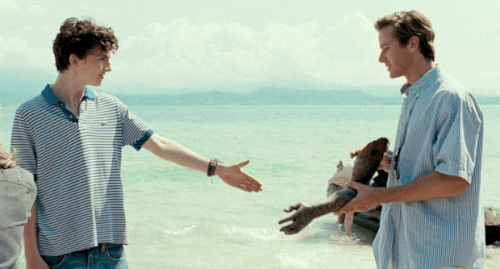
When was the last time that you sat soaking up the momentous memories of your youth? There is something in our natures that longs to relate to the stories that we see on the screens in front of us. Coming of Age films have been increasing in popularity in recent years which is evidenced by their winning of many major movie awards. In 2018, “Lady Bird” won a Golden Globe not only for Best Motion Picture for a Musical/Comedy but also for Best Performance by an Actress in a Motion Picture for a Musical/Comedy for Saoirse Ronan. “Call Me by Your Name,” won an Oscar for Best Adapted Screenplay, and won AFI’s Movie of the Year. “Moonlight,” not only won 3 oscars for Best Motion Picture of the Year, Best Performance by an Actor in a Supporting Role for Mahershala Ali, and Best Adapted Screenplay but also won a Golden Globe for Best Motion Picture for a Drama. These films aren’t just critically acclaimed but the general public likes them as well. “Lady Bird” got a 99% on Rotten Tomatoes, and a 4.7/5 on Common Sense Media. “Call Me by Your Name” got a 95% on Rotten Tomatoes and 4/5 on Common Sense Media. “Moonlight” got a 98% on Rotten Tomatoes, and a 4/5 on Common Sense Media. Other than being Coming of Age films and getting many awards and high ratings what else do these movies have in common?
The coming of age genre branches off of the German term bildungsroman, which means “a novel dealing with one person's formative years or spiritual education,” the two terms are often used interchangeably but there is a difference between them. The coming of age genre was first “invented” back in 1819, by philologist Karl Morgenstern during his university lectures. These same ideas were later replicated by Wilhelm Dilthey who made the ideas popular in 1905. Some of the older, popular coming of age films from this early era are: “400 Blows,” which came out in 1959 and has 100% on Rotten Tomatoes. The Mike Nichols movie “The Graduate” which came out in 1967, won the Academy Award for best director and many more awards. It seems however, that there has been a new, fresh wave of coming of age films that are better than ever. This wave started with the release of Richard Linklaters film “Boyhood”. “Boyhood” is an incredible movie which took 12 years to film and it truly redefined the new coming of age genre.
After the release of “Boyhood,” many other incredible coming to age films came to be, as “Boyhood” was really a pioneer in opening the doors to a variety of possibilities that directors could take in these films. This paved the road for films like “Moonlight”, “Lady Bird”, and “Call Me by Your Name.” Each of these new Coming of Age films have many things in common, one of the things I want to focus on through this paper is that they are all set in the past. “Lady Bird” came out in 2017 but was set in 2002, “Call Me by Your Name” came out in 2017 but was set in the 80s, “Moonlight” came out in 2016 and was also set in the 80’s and “Perks of Being a Wallflower,” came out in 2012 but was set it 1990. In this essay, I will discuss why coming of age film are set in the past and how the historical setting helps to show the essentialness and commonality of the moments we all go through.
When referencing coming of age films, Theskyid.com said, “We can never again experience the triumphs and failures of growing up. A movie, however, is the closest we can come to reliving this experience. This is why good cinema is so important. It can partially recreate those moments for us, and we can see a part of ourselves in the onscreen performance.” In this article they also name many classic coming of age films and the feelings we get reminded of from watching them. For example, watching “The Breakfast Club” can remind you how terrible high school sometimes was. Or watching “Stand By Me,” can be a reminder of your childhood friends and how those relationships affected who you are today. The list can go on and on with these movies and the relatable feelings they bring to all of us.
Francois Truffaut, The director of “ 400 Blows,” believes the coming of age story is for everyone. He said, ”The coming-of-age film is timeless for a reason: It's the one experience directors can be assured every moviegoer has gone through” The director can be sure that to some extent, everyone has gone through these same emotions and feelings in his or her own life. Badgerherld.com said, when talking about the film “Boyhood”, “The genius of this movie isn’t a shocking plot twist or creative story, but the truly enigmatic portrayal of human life” This description is relatable to most of these coming of age stories, the plot might not be wild and crazy but the feelings and emotions portrayed are incredibly relatable and touching to us.
Coming of age movies aren't like any other movie genres out there. They have an element and feeling that you can’t get in any other genre. There is more to this genre than just a “teen movie”, a “teen movie” is a movie just about teenage angst. Hadley Freeman explains, “The coming-of-age is a more soulful phenomenon: yes, it looks at teen life, but something deeper about the human spirit is revealed, and just because it might happen on a prom dance floor doesn’t in any way diminish the epiphanic uplift. Put it this way: with a teen film what you remember is the funny teen stuff, with a coming-of-age film you remember the emotions.” This genera has more emotion than most movies and that is one of the reasons that they are so widely excepted.
Most great coming of age films are set in the past and the historical setting of theses films help the message within them be clear and concise, modernity could blunt the message of universality. In today's world everything is moving a billion miles per minute. With new technology coming out everyday, it’s hard to keep up with it let alone keep track of it all. Things like social media didn't come out until the later 2000s. Facebook started in 2004, Twitter in 2006 and instagram in 2010. You can't look anywhere without seeing an Iphone having someone take a selfie or even hearing the latest news about a Kardashian. Technology is something that has pushed its way into everyone's lives whether we like it or not. So then why are so many of these new coming of age films set in a time before all of these new technological advances came out, not after them?
Not everyone can relate to the new age of technology. Not everyone grew up with the latest Iphone, or three thousand plus followers on instagram. Not everyone was worried about their crush retweeting their tweet or adding them back on snapchat. Millennials can relate to this new technology because they were coming of age when it all started to become popular. Baby boomers and older however, cannot always relate to this new technology and the way it has changed how it feels to grow up. If these popular coming of age films that I mentioned before were set in the present, they would be totally different. For example, in “Lady Bird,” she lies about where she lives and because technology wasn't as big in 2002 she was able to keep this going for quite a long time. If that movie was set now, lying about where you lives becomes a lot harder when everyone can look you up on “find my friends” and clearly see she is in another house everyday. In the film “Call Me By Your Name,” once the summer is over Oliver leaves Elio’s house and their communication becomes quite slim. Around Christmas time Oliver calls the family to tell them he’s engaged to someone else. Elio is left shocked and heartbroken. If that was to happen now, Elio would be following Oliver on Instagram and he would see all the pics Oliver is posting with this other girl and he wouldn't be shocked or surprised at all when they get engaged. In “Moonlight,” when Kevin and Chiron see each other again for the first time in a very long time, they have to get completely caught back up on eachother lives. If that was to happen in present day, catching up wouldn't take so long because they have been following each other on Facebook this whole time. If these films were set in the present, imagine how different they would be, imagine how non-universal and imagine quite frankly how boring these films could potentially be. They need the more historical setting so that everyone can actually relate to them.
Having these films set in the past brings a nostalgic feeling we can all relate to. Webster's dictionary defines nostalgia as, “a wistful or excessively sentimental yearning for return to or of some past period or irrecoverable condition”. This is the exact feelings these movies bring to people. In an article by Alan Siegel, he talks about the role of nostalgia in our everyday lives. Nostalgia has been shown to counteract loneliness, boredom and anxiety,” John Tierney of The New York Times wrote in a 2013 feature about the psychological study of the phenomenon. “It makes people more generous to strangers and more tolerant of outsiders. Couples feel closer and look happier when they’re sharing nostalgic memories. On cold days, or in cold rooms, people use nostalgia to literally feel warmer.” Nostalgia used to be considered a neurological disorder but now, in fact, it is looked upon as something that improves your mental health and even improves your daily mood. These films all have a special element of nostalgia in them. The movies with these past historical settings are doing this they bring us back to an older time that we can all relate to and by doing so they are improving our overall mental health.
Films set in these older time periods are set in times that all people know about. One does not have to have grown up in the 80s to know about the 80s. I grew up in the 2000s but I still know that if I start seeing leg warmers, mini skirt, parachute pants and some huge earrings that this movie is probably set in the 80s. Or if I start hearing only the songs like “Smells Like Teen Spirit”, “Wonderwall” and “Nothing Compares 2 U” then this movie is probably in the 90’s. Even though I didn't grow up in those time periods, I know people who have. Whether it is a parent, a grandparent, a friend, or someone from a history book, when we know people in these certain time periods they become more personal to us. We can look at these films and see that these people that we know, who grew up in totally different times, still went through the same things during their coming of age moments, it really unifies us to the themes in these movies. These cross-generational themes prove that movies that are made today but are set in the past really showcase the feelings and emotions that go along with coming of age perfectly. These movies that have been produced in the last couple of years but are set in the earlier time truly show that these ideas can be relatable to all. It doesn’t matter when they were made or what setting they are in, they still can relate to those who are in the time period they were in, the time period they were placed in, and all between.
A problem that I have heard many people say about this genera in particular is that all these films are “white as hell” and that these films are only written about privileged white upper class citizens. While I do agree that these films could always have more diversity, one could argue that almost all genres could use more diversity. If the people saying that were basing all their opinions off of teen moves such as “Clueless” than yes you would be right in saying that film is based off of privileged upper class citizens. But we have to remember coming of age films and teen movies are not the same. If you look at any modern coming of age films your perspective would probably change. For example, the coming of age film “Moonlight,” is about the life of Chiron as he is growing up in Miami as a young, gay, African-American man. Or the film “Juno,” about a 16 year old girl who gets pregnant in highschool and her decision to not get an abortion and to put her baby up for adoption. The list of these movies goes on and on for their originality and the fact that they all have relatable themes no matter the individual circumstances they are all going through.
Another problem people have with these movies is they say they are all about sex and that sex is the only theme in them. In many of these films the characters either talk about or actually do have sex, but that is definitely not what this gerera is based on and there are certainly more themes and ideas to get out of these films than just that. Many people think these movies only focus on the “sexual awakening” part of coming of age but that simply isn't true. Coming of age means many different things for many different people and each of these films show that beautifully. Coming of age really is all about choices, the choice can basically be boiled down to this, do you want to live the life that society has made for you or do you want to live you own? These films all show this when the character chooses for themselves how they feel about gender, social classes, religion, many other issues including sex. These films are not based around sex although that may sometimes be how they are portrayed. In reality, they are based around growing up, choices and searching for one’s own identity.
The coming of age genre is very relatable. The themes and emotions in these films are something we can all personally relate to in each of our lives. We may not have had the exact same life as the person we are seeing on screen. We might not be the same skin color as the person on screen. We might not have the same sexual orientation or have the exact same problems. But we have all grown up, “Reliving your youth might seem possible for a while, while you watch a character go through the highs and lows of adolescence. And that may be reason enough to sit down and watch a good coming of age film that takes you on a stroll down Memory lane”.
6 notes
·
View notes